Baby Care & Parenting Blogs
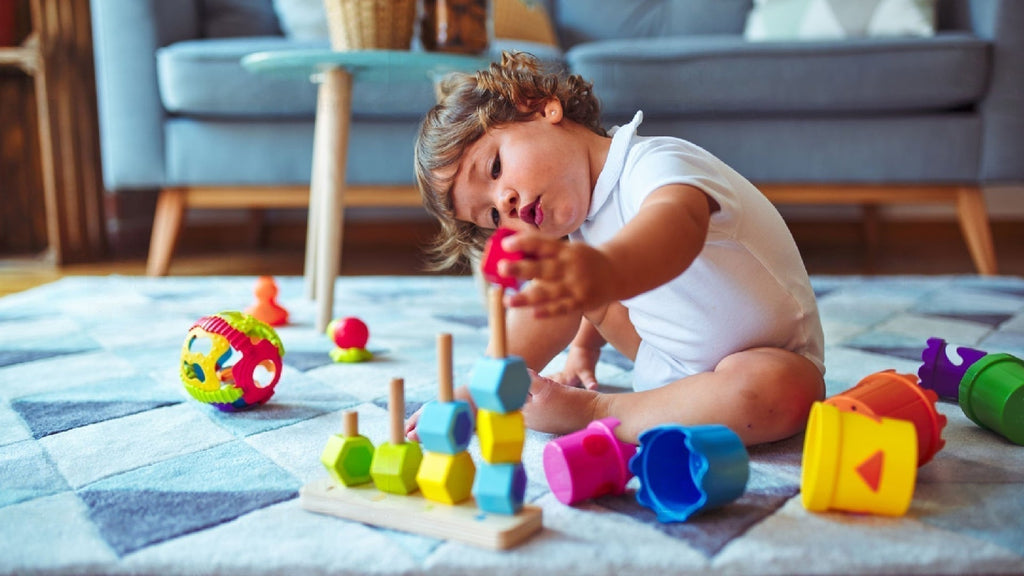
How to Introduce Your Baby to Learning?
Have you ever wondered how you instinctively know an apple is a fruit and a cucumber is a vegetable? Who categorized them for you in your mind? From simple classifications like this to self-feeding, responding to faces, and eventually talking, a baby gradually learns everything over time. It's fascinating how quickly this happens-we often don't realize that our little ones might already know so much!
Newborns are truly 'new' to everything. Their experiences shape their understanding of the world. And as parents, you open the doors to these experiences. Letting your baby feel, explore, play, and speak is key to their development. If you're wondering how to introduce your baby to learning, don't worry- it's simpler than you think.
Easy Speech Activities for Little Ones
Here are some tips to help your baby learn and grow while making parenting joyful:

Baby Sound Learning
Teaching newborns begins with sound. In the first three months, your baby is at the babbling stage. Though they don't form words yet, they react to sounds! Watch how their tiny faces light up or turn toward a sound. One of the sweetest moments? When your baby smiles, hearing your voice-it's the familiarity that makes them happy.
At this stage, baby toys with gentle sounds are a great choice. Music not only engages them but also enhances their development. It's a fun way to help newborns play and build their listening skills.
Baby Language Learning
Words are magical for babies. While they might not yet understand the emotions behind words, they learn their importance through your tone and actions. How to teach a newborn language? Start simple. Say "Good morning" to signify it's time to wake up and start the day. Say "Good night" to teach them that it's time to rest.
These little affirmations create structure and introduce your baby to language and routine. Saying "Goodbye" when leaving reinforces the concept of departures and arrivals. These small, consistent actions lay the foundation for their language development.
Baby Visual Learning
Babies are visual learners, but it takes time for their cognitive processes to develop. Unlike adults who can imagine things instantly, babies need concrete references. This is where visual aids come in.
Start with categories like animals, fruits, daily objects, vehicles, or body parts. When you show them a picture and say the word, they begin associating the two. Over time, this strengthens their ability to form complete sentences. Incorporating newborn brain development activities like picture books or flashcards can make this process even more engaging for your little one.
Baby Playtime Learning: Dexterity and Mobility
Playtime is vital for learning dexterity and mobility. Allow your baby to move things around, manipulate toys, and explore their surroundings. Toys that require hand movements, like stacking blocks, are excellent for enhancing hand-eye coordination.
Introduce toys that also teach shapes and colours. These are great activities for 1-year-olds who are curious and eager to explore. For example, FDA-approved, child-friendly stacking toys ensure safety while boosting creativity and motor skills.
As your child starts to crawl and walk, let them roam and explore freely. Yes, they might stumble or fall, but that's all part of the process. Give them gentle affirmations like "You're fine!" to reassure them and build their confidence. If you're wondering how to help a newborn play, remember to be a part of their explorations and encourage their little adventures.
Baby Skill Development: Portray Play
Do you remember those imaginary games from your childhood, like running a barber shop or pretending to teach dolls? These games play a crucial role in a child's brain development. Through pretend play, your child learns about relationships, social cues, and communication.
Parenting tips for new parents often emphasize play as a cornerstone of learning. You don't have to create rigid teaching moments. Instead, simply talk to your baby, play with them, and listen to what they say. These interactions will naturally evolve into meaningful learning experiences over time.
Help Your Baby Sleep and Learn
Sleep is crucial for newborn brain development. If you're wondering how to sleep-train a newborn, start by creating a consistent bedtime routine. This might include a warm bath, gentle sounds, or quiet playtime before bed. A well-rested baby is more active and curious, making it easier to introduce new learning activities.
Also Read: Types of Toys for Children by Age and Developmental Stage
Final Thoughts
There are no complicated rules when it comes to helping your baby learn. Teaching newborns is about creating opportunities for exploration, providing gentle guidance, and being present. From introducing newborn brain development activities to engaging in fun activities for 1-year-olds, everything you do contributes to their growth.
So, take a deep breath and enjoy this journey of discovery with your little one. Every smile, babble, and playful moment is a step toward a bright and curious future!
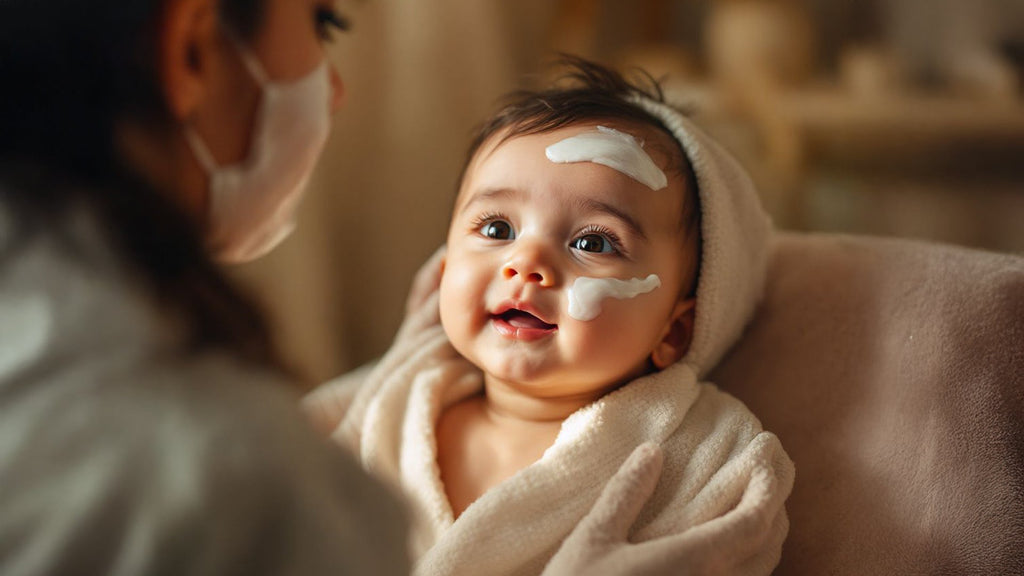
Does Your Baby Need Face Cream? Here's What You Should Know
As a new parent, it's totally normal to wonder about the best ways to care for your baby's delicate skin. You've probably seen a ton of products out there marketed as essentials, but when it comes to baby face cream, is it really necessary? Should you be adding it to your baby care routine? Let's break it down and help you make an informed decision.
Understanding Your Baby's Skin
Babies are born with soft, smooth, sensitive, and still-developing skin. Unlike adults, their skin is thinner, more porous, and more prone to irritation. Plus, it cannot protect itself from environmental stressors like the sun, wind, or pollution. That's why many parents turn to baby face cream that can help shield and hydrate their little one's skin.
However, while their skin might need some extra care, not all products are the right fit. So, let's take a closer look at whether a baby face cream is necessary for your baby.
Does Your Baby Need Face Cream?
In most cases, your baby's skin might not need baby face cream. Newborns and infants usually don't require a complicated skincare routine-just a gentle bath and a mild moisturizer, like baby lotion, will do the trick. Their skin typically does a great job if it's not exposed to harsh conditions.
That said, baby face creams aren't a bad idea either. Sometimes, your little one's skin might need a little extra TLC. If they have dry patches, redness, or irritation, a baby face cream could be just what they need to feel more comfortable. But don't jump to conclusions just yet-let's dive into how you can figure out if your baby really needs one.
Signs Your Baby May Need a Face Cream
There are a few tell-tale signs that your baby might benefit from baby face cream. Here are some of the most common:

-
Dry Skin:
If your baby's skin is feeling rough or flaky, especially on the face, it may be a sign they need some extra moisture. -
Chapped Skin:
Exposure to wind, cold air, or frequent drooling can cause your baby's skin to become chapped, particularly around the cheeks and chin. -
Eczema:
Babies with eczema or other skin conditions may have inflamed or itchy skin, making a soothing baby face cream an important part of their routine. -
Redness or Irritation:
Sometimes, certain environmental factors or even a diaper rash can cause irritation on the face. A gentle, calming cream could help.
If you notice any of these signs, a baby face cream could be helpful in providing extra hydration and soothing relief. But make sure to consult your pediatrician before trying any new products.
What to Look for in a Baby Face Cream
Choosing the right baby face cream can be tricky with all the options available. To make sure you're picking a safe and effective product, here are some key things to look for:
-
Gentle Ingredients:
Look for creams that are free of harsh chemicals, fragrances, or dyes. Natural and organic ingredients like shea butter, aloe vera, and chamomile is great for soothing sensitive skin. -
Hypoallergenic:
Babies can have sensitive skin that's prone to reactions. Opt for a hypoallergenic cream to reduce the risk of irritation. -
Moisturizing:
Since your baby's skin needs plenty of hydration, choose a baby face cream that has moisturizing ingredients such as glycerin, jojoba oil, or coconut oil. -
Non-Comedogenic:
Some creams can clog pores. For babies, look for creams that are non-comedogenic to avoid breakouts or rashes. -
Derma Safe:
Products that are derma safe are often safer and more reliable for your baby's skin.
By paying attention to these qualities, you can choose a baby face cream that will keep your baby's skin soft and hydrated without risking any adverse reactions.
How to Use Baby Face Cream Safely
If you've decided that a baby face cream is right for your little one, it's essential to apply it safely. Here are some tips to keep in mind:
-
Start with Clean Skin:
Always clean your baby's face before applying any cream. Use a gentle, baby-friendly cleanser to remove dirt or impurities. -
Test First:
Before applying a new product, do a patch test on a small area of skin to check for any allergic reactions. -
Use a Small Amount:
Babies don't need a lot of products. A tiny dab of baby face cream is enough to cover their face. -
Gently Massage:
Apply the cream in gentle circular motions to help it absorb into the skin.
By following these simple steps, you'll ensure that you're using baby face cream safely and effectively.
Benefits of Using a Face Cream for Your Baby
Using a baby face cream can offer a range of benefits for your baby's skin, including:
-
Moisture Retention:
Baby skin is more prone to drying out, especially in harsh weather conditions. A nourishing cream locks in moisture and helps prevent dryness. -
Protection from the Elements:
Whether it's cold air or direct sunlight, a good face cream provides an extra layer of protection against environmental stressors. -
Soothing Relief:
For babies with skin irritations, rashes, or eczema, a baby face cream can help soothe the skin and reduce discomfort.
With the right product, a baby face cream can keep your little one's skin soft, protected, and comfortable all year round.
Conclusion
So, does your baby need baby face cream? It really comes down to your baby's skin and any specific concerns you might have. For a lot of babies, a gentle moisturizer does the job just fine. But if your little one has dry patches, redness, or other skin issues, a baby face cream could be exactly what they need. Just make sure to pick one with safe, gentle ingredients, and always check with your pediatrician if you're unsure. At the end of the day, you're doing your best to keep your baby happy, healthy, and comfortable!

6 Ways to Boost Your Child's Imagination

What Are Baby Growth Spurts? Everything Parents Need to Know
Becoming a parent is an amazing journey, but let's be honest-it comes with its fair share of surprises! One moment, your baby is all smiles and coos, and the next, they're fussier, hungrier, and growing like a little sprout overnight. This is what we call a growth spurt, and if you're wondering what's going on, you're definitely not alone. Let's talk about what growth spurts are and everything you need to know to get through them.
What Are Baby Growth Spurts?
Growth spurts are a natural part of a baby’s journey. During these phases, little ones experience rapid development, their bodies may suddenly gain weight, grow taller, and even begin to show new abilities. These changes often appear unexpectedly, leaving parents curious about what’s happening. In reality, it’s simply the baby’s way of growing and moving forward in development.
While exciting, growth spurts can also bring challenges. Babies may want to feed more often, show signs of disturbed sleep, or become a little more irritable than usual. These shifts are temporary and completely normal. With extra care, comfort, and patience, babies quickly adjust and continue thriving.
Every growth spurt is a small milestone, a sign that the baby is healthy and steadily moving toward new stages of discovery.
When Do Growth Spurts Happen?
Growth spurt in babies can be a bit predictable. They tend to happen during the first year, and there are some common phases when they're likely to occur:
- 1 to 3 weeks
- 6 weeks
- 3 months
- 6 months
- 9 months
Each baby grows in their own unique rhythm, so developmental stages may appear a little sooner for some and a little later for others, and that’s completely normal. The timing of growth spurts can vary from baby to baby, and that is perfectly normal. These spurts usually last a few days to a week. Before long, babies usually settle back into their routine—growing a little bigger, a little stronger, and showing even more curiosity about the world around them.
Signs Your Baby Is Going Through a Growth Spurt
Wondering if your baby's going through a growth spurt? Here are some signs to look out for:
Increased Hunger:
Your baby might suddenly seem like they can't get enough milk. Whether you're breastfeeding or bottle-feeding, you may notice them feeding more often or for longer stretches.
Changes in Sleep Patterns:
Growth spurts can make your baby sleep more than usual to support all that growth. On the flip side, they might wake up more frequently for extra feed.
Fussiness:
When babies are going through a growth spurt, they can get extra cranky. They're hungry and tired, and their bodies are working hard, which can make them a bit irritable.
Clinginess:
You might find your baby wanting to be held more often. They're looking for comfort while going through this big developmental leap.
Noticeable Growth:
After the growth spurt, you might notice their clothes feeling a little snugger, or their head seems a bit bigger proof that they've been growing!
What Causes Baby Growth Spurts?
The exact triggers for growth spurt in babies aren't fully understood, but they're just a natural part of growing up. During these times, your baby's body and brain are growing at a rapid pace, with a mix of genetics, nutrition, and their surroundings all playing a role.
Physical Growth:
Their bones, muscles, and organs develop super quickly during these spurts.
Brain Development:
These growth spurts often come hand-in-hand with mental leaps, helping your baby pick up new skills and abilities.
Nutritional Needs:
As all this growing happens, babies need extra calories to fuel the changes, which is why they might seem hungrier than usual.
How to Handle Baby Growth Spurts?
Growth spurt in babies can feel intense, but with a little prep and patience, you can manage them. Here's how you can help your baby through it:
Follow Their Lead:
Let your baby eat and sleep as much as they need. Their body knows exactly what it's doing during a growth spurt.
Stay Hydrated:
If you're breastfeeding, be sure to drink plenty of water to keep your milk supply flowing strong.
Offer Comfort:
When your baby's fussy, hold them close and offer some cuddles. Sometimes, they just need that extra bit of reassurance.
Don't Skip Meals:
If your baby is eating solids, make sure their meals are balanced and full of nutrients to fuel all that growing.
Be Patient:
Remember, this phase is temporary! Your baby will settle back into their usual routine soon enough.
Myths About Baby Growth Spurts
There are a lot of myths out there about growth spurt in babies, so let's clear a few up:
Myth 1: Growth spurts only happen in the first year.
Fact: Actually, growth spurts can happen throughout childhood, especially during those teenage years.
Myth 2: Fussiness always means a growth spurt.
Fact: While fussiness is common during a growth spurt, it could also be due to teething, illness, or just a bad day.
Myth 3: Babies need supplements during growth spurts.
Fact: Most of the time, a well-balanced diet or breast milk provides everything your baby needs during a growth spurt.
When to Be Concerned?
While growth spurt in babies is totally normal, there are a few times when it's a good idea to check in with a doctor:
- If your baby isn't gaining weight consistently.
- If they're feeling unusually lethargic or extra fussy for a longer period.
- If you notice other worrying symptoms, like a fever or rash.
Trust your instincts. If something doesn't feel right, it's always okay to reach out to a professional for advice. Better safe than sorry!
Conclusion
Baby growth spurts can sometimes feel challenging for parents, but they’re actually a positive sign that the little one is developing just the way they should. With love, patience, and gentle care, parents can help their babies navigate these phases more comfortably.
It’s important to remember that every baby grows at their own pace. No two developmental journeys are the same, and that’s what makes each milestone so special. Parents should embrace these changes, celebrate every achievement, and remind themselves that they’re doing wonderfully in their own way.
Related Read - Importance of Baby Growth Chart for a Parent
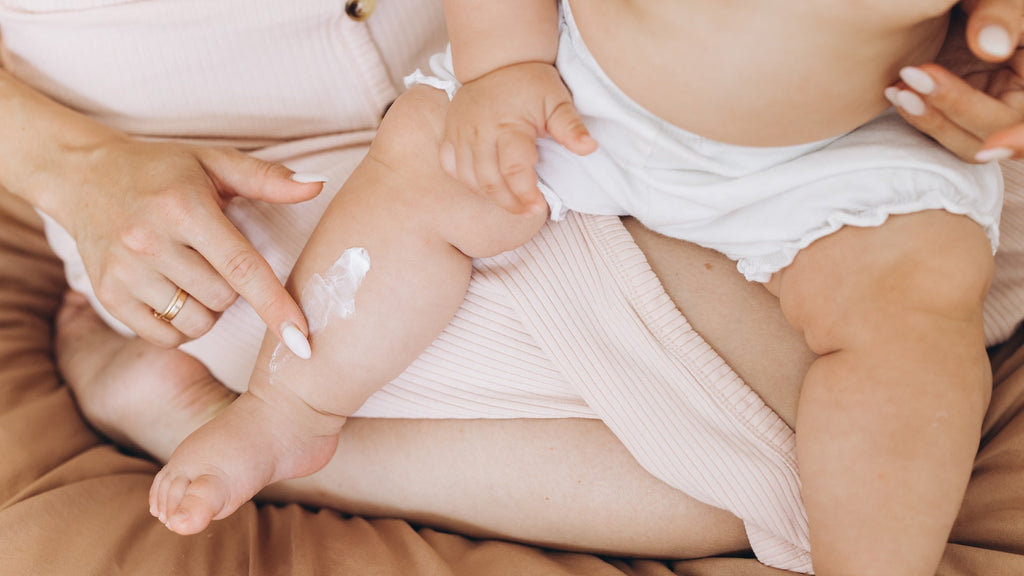
Winter Dry Skin in Babies: Why Lotion is a Must-Have This...
Winter brings a chill in the air, cosy blankets, and festive cheers. But for babies, it also brings dry, flaky skin that can be uncomfortable and even painful. As parents, you want your baby to feel soft, smooth, and happy in their delicate skin. That's where baby lotion comes to the rescue, especially organic ones that nurture and protect without any harsh chemicals.
Ingredients like shea butter, coconut oil, and almond oil work wonders for hydration. For example, the Moh Malai Baby Body Lotion use these natural elements to deeply moisturize and nourish, keeping your baby's skin supple and glowing even in winter. Shea butter locks in moisture, coconut oil softens, and almond oil ensures smoothness-all while being gentle and safe.
With the right baby lotion, winter can be all about cuddles and comfort for your little one!
Why Baby Skin Needs Extra Care in Winter
Baby skin is so much thinner and more delicate than ours, making it prone to losing moisture quickly-especially during winter. Dry air outside and heaters inside can leave their skin feeling parched, sensitive, and even itchy.
In cold weather, natural oils in the skin disappear faster, often leading to redness, irritation, or even eczema. Since babies can't tell us they're uncomfortable, you might notice extra scratching, fussiness, or dry patches. That's why using a gentle, organic baby lotion regularly is a game-changer. It not only locks in moisture but also protects their skin barrier and soothes irritation, keeping your little one comfy and happy all winter long!
Benefits of Using Lotion for Winter Dry Skin
Using baby lotion in winter isn't just about adding a soft touch; it's about protecting your baby's health. Here are some benefits:
-
Hydration:
A good baby lotion replenishes lost moisture, keeping the skin soft and supple.
-
Barrier Protection:
Organic lotions often contain natural oils like coconut, almond, or shea butter, which form a protective barrier against harsh elements.
-
Healing Properties:
Many organic baby lotions have ingredients like aloe vera or calendula, which soothe redness and heal minor irritations.
-
Prevents Cracking:
Consistent use prevents severe dryness that can lead to painful cracks or bleeding.
-
Comfort:
Babies with well-moisturized skin are less likely to scratch and fidget, leading to better sleep and happier moods.
Choosing the Right Baby Lotion for Winter
Not all lotions are created equal. When choosing a baby lotion for winter, here are a few things to keep in mind:
-
Go Organic:
Organic baby lotion is free from harmful chemicals, synthetic fragrances, and dyes. It's gentle and safe for sensitive baby skin. -
Look for Moisturizing Ingredients:
Natural ingredients like shea butter, cocoa butter, and almond oil are excellent for deep hydration. -
Hypoallergenic Options:
If your baby has sensitive skin, choose a lotion labelled hypoallergenic to reduce the risk of irritation. -
Fragrance-Free or Mildly Scented:
Strong fragrances can irritate delicate skin. Opt for unscented or naturally scented products. -
Test First:
Always do a patch test on a small area of your baby's skin to ensure there's no allergic reaction.
Tips for Applying Lotion Effectively
Applying baby lotion isn't just about slathering it on. There's a technique to make it work better:
-
Apply After Bath Time:
Moisturize your baby immediately after a bath while their skin is still damp. This helps lock in the moisture. -
Use Gentle Motions:
Use light, circular motions to apply the lotion. Avoid rough rubbing. -
Don't Forget the Creases:
Pay attention to areas like behind the knees, elbows, and neck folds where dryness often hides. -
Keep It Handy:
Reapply throughout the day, especially on exposed areas like the face and hands. -
Warm the Lotion:
Rub the lotion between your palms before applying it to avoid shocking your baby with cold cream.
Additional Winter Skin Care Tips for Babies
While baby lotion is the hero of winter skin care, a holistic approach works best. Here are some additional tips:

-
Humidifier:
Place a humidifier in your baby's room to add moisture to the air. -
Avoid Over-Bathing:
Frequent baths can strip natural oils. Limit baths to every other day and use lukewarm water. -
Dress Wisely:
Use soft, breathable fabrics like cotton to prevent irritation. Avoid wool directly on the skin. -
Stay Hydrated:
If your baby is old enough, ensure they're drinking enough water to keep their skin hydrated from the inside out. - Protect Against the Elements:
Use a weather-appropriate barrier cream or lotion before taking your baby outdoors.
Common Questions Parents Have About Winter Skin Care
-
How often should I apply lotion to my baby in winter?
Aim to apply baby lotion at least twice daily-right after baths to lock in moisture and before bedtime for overnight hydration. If you notice dry patches, feel free to reapply as needed during the day.
-
Can I use regular lotion instead of baby lotion?
It's best not to. Regular lotions often have harsher ingredients that might irritate your baby's sensitive skin. Stick to gentle, specially formulated baby lotions to keep their skin safe and soft.
-
What if my baby's skin is still dry despite using lotion?
If your little one's skin stays dry, it's worth checking in with your paediatrician. They may suggest a richer cream or evaluate for conditions like eczema that might need extra care.
-
Are organic lotions better?
Yes! Organic baby lotions are free from harmful chemicals, making them a safer option. Plus, the natural ingredients deeply nourish and protect your baby's delicate skin.
Conclusion
Winter can be tough, but with a little extra love and the right care, your baby's skin can stay soft, smooth, and healthy. This season, organic baby lotion is a must-have-it keeps your little one's skin hydrated, protected, and comfy no matter how chilly it gets. Pair it with simple skincare habits like short baths and a cosy humidifier, and you'll be mastering winter parenting in no time. After all, happy, healthy skin means a happy baby-and isn't that the best gift of all?

5 Winter Foods That You Should Include In Your Lil One's ...
Winter can be a tricky season, can't it? Especially for new parents juggling a thousand things while trying to keep their little one's cosy and healthy. You're probably wondering how to keep those sniffles at bay and boost your child's immunity. Well, let me tell you, a good diet packed with the right nutrients can work wonders! By adding a few carefully chosen winter foods for toddlers and winter superfoods for kids, you can help your baby stay strong and healthy through the season. Here are a few simple, nourishing options for your child's winter diet for kids!
5 Gentle Foods to Warm Your Winter Naturally

1. Badam Halwa (Almond Pudding):
Almonds are your baby's best friend. As soon as your lil one turns one plus, start feeding them almonds halwa in winter. A spoonful quantity is all you need to provide them with rich protein and strengthen their bones. If your child is over a year old, a small serving of this warm dessert can give them the energy they need to stay active and warm during those chilly days. And here's another tip: almond oil isn't just for eating-it's amazing for massages, too!
Along with their diet, give them a massage with Baby Forest Badami Sneh organic cold-pressed almond oil to boost their growth and immunity. A gentle almond oil massage can do wonders for your baby's skin, keeping it soft and hydrated through the dry winter months. It's a win-win for both you and your baby!
2. Turmeric Milk (Haldi Doodh):
This one is a saviour from cough and cold. It requires almost no time, and mammas are free from doing something extra. Giving your baby turmeric milk is the most accessible because all you need to do is add a pinch of haldi while you feed milk from your spice box. It boosts the baby's immunity and antioxidants do their magic whenever needed.
Incorporating haldi milk for babies can be a simple yet effective way to boost their immunity. Just a warm cup of milk with a pinch of turmeric can work wonders. It helps boost their immunity, keeping those pesky colds and coughs at bay. Plus, it's so comforting-perfect for those chilly winter nights. It not only keeps your little ones healthy but also warms them up from the inside. Think of it as a hug in a cup for your baby!
3. Lentil and Vegetable Soup:
If your baby is weaning, dal soup is one of the most nutrient-rich foods, full of protein. A hearty lentil and vegetable soup, for instance, is loaded with proteins, vitamins, and minerals that are essential for their growth and development.
The best part? Its smooth texture makes it super easy for babies to slurp down happily! Plus, the warmth of the soup is just what they need to stay cosy on chilly days. Adding such soups to your child's winter food chart for kids not only makes mealtime nutritious but also helps ensure they're getting a balanced diet. It's a simple and wholesome way to keep their health on track all through winter.
4. Sweet Potatoes:
Sweet potatoes are a winter favourite, and for good reason! They're packed with beta-carotene, vitamin A, and fibre, making them a nutrient-rich addition to your little one's winter food for kids. Their natural sweetness and soft, creamy texture make them a hit with most children-it's like nature's dessert in a vegetable.
You have so many options when it comes to serving sweet potatoes. You can mash them, roast them, or blend them into a smooth puree. However, when you prepare them, they're sure to be a comforting treat. What's more, the antioxidants in sweet potatoes help detoxify the body, while their warmth-producing properties make them perfect for keeping your child snug during the chilly season. They're the ultimate winter superfood for kids!
5. Jaggery Syrup with Nuts:
The right amount of jaggery, not too little and not too much, is good in winter for babies. Its natural sweetness makes it a healthy alternative to sugar, and it's packed with essential minerals like iron. For younger babies, whole nuts might be a bit tough to handle, but you can easily mix powdered nuts into a warm jaggery syrup.
This combination isn't just delicious; it's a natural remedy for coughs and colds while helping produce natural heat in the body. It's a comforting treat that also supports their immunity during the cold season. Just be sure to introduce jaggery after consulting your paediatrician, especially if your baby is under one year old. It's a wonderful addition to your child's winter food chart for kids!
Conclusion
By adding these wholesome, comforting foods to your child's diet, you're doing more than just preparing delicious meals-you're giving their immunity a much-needed boost to tackle the winter chill. Each of these winter superfoods for kids brings its own set of benefits, ensuring your little one stays healthy, warm, and happy.
Remember, every baby is unique, and their little bodies might respond differently to new foods. Start slow, observe how they react, and always check with your paediatrician if you're unsure. Parenting can be a rollercoaster, but with the right nutrition and a little bit of love, you've got this.

How to Soothe Your Newborn's Hiccups
Welcoming a newborn into the world is such a joyful yet sometimes overwhelming experience. As parents, we all want to do everything we can to ensure our little one's comfort and well-being. One thing that might leave you scratching your head, though, is those hiccups in newborn babies.
At first, they might seem alarming, but don't worry-hiccups are usually harmless. Still, they can be frustrating for you and your baby. In this article, we will explore why babies get hiccups, how to soothe them, and what to avoid, so you can confidently handle this common situation.
Why Do Newborns Get Hiccups?
Hiccups in newborn babies are pretty common, so there's no need to panic when it happens. But why do they occur? Simply put, hiccups happen when the diaphragm-the muscle just below the lungs-contracts involuntarily. This sudden contraction causes the classic "hic" sound. Babies are often triggered by swallowing air while feeding, having a full stomach, or even a slight temperature change. These little hiccups are totally normal and part of your baby's development. While they can feel unsettling, they're usually nothing to worry about.
Are Hiccups Harmful to Babies?
Many parents wonder if hiccups in newborn babies are harmful, and the short answer is no-they're not. Hiccups don't usually cause pain or distress for most babies. In fact, they often go away on their own after just a few minutes. Your baby's body is still adjusting to the world outside the womb, and hiccups are just part of that process. While they can sometimes be a little annoying, they're generally a temporary phase. However, if the hiccups bother your baby a lot or last for an unusually long time, it's always a good idea to check in with your pediatrician.
Tips to Soothe Your Baby's Hiccups
As a parent, you'll want to soothe your baby as quickly as possible when those pesky hiccups in newborn strike. Here are some simple and effective tips to help manage them:

-
Try Feeding Your Baby:
Sometimes, the act of sucking can help relax the diaphragm and stop the hiccups. Offer your baby a small amount of milk or water (depending on their age) and let them feed slowly. This can often calm the spasms. -
Burp Your Baby:
If your baby has hiccups, trapped air in their stomach might be the culprit. After feeding, gently burp them to release any trapped air. This can often prevent or stop the hiccups altogether. -
Change Positions:
If your baby's hiccups persist, try changing their position. Hold them upright for a while after feeding to let gravity help. Alternatively, rocking them gently or placing them in a different position may help ease the discomfort. -
Use a Pacifier:
Offering a pacifier can sometimes provide relief from hiccups in newborns. The sucking motion can help relax the diaphragm and stop the hiccups in their tracks.
-
Give Your Baby a Warm Bath:
A warm bath can help your baby relax and may provide some relief from hiccups. The warmth can soothe their muscles and help them feel more comfortable.
These tips can help you ease your baby's hiccups quickly so you both can get back to enjoying some peaceful moments together.
What to Avoid When Dealing with Baby Hiccups
While there are plenty of ways to soothe hiccups in newborn babies, there are also a few things you'll want to avoid. First, never try to startle your baby to stop their hiccups. It might seem like a quick fix, but it can actually upset them, and it won't solve the problem. Second, steer clear of giving your baby water or any solid food if they're too young.
Babies under six months should only have breast milk or formula, as other liquids can mess with their digestive system. And lastly, avoid overfeeding your baby. Sometimes, hiccups in newborn babies are caused by overeating, so smaller, more frequent feedings are usually the way to go. Keep these tips in mind, and you'll help your baby feel more comfortable!
Preventing Hiccups in the Future
While you can't always prevent hiccups in newborn babies from happening, there are a few simple strategies to help reduce the chances of them occurring:
-
Feed Your Baby Slowly:
Let your baby take their time during feedings. If they're feeding too quickly, they might swallow air, which can lead to hiccups. Taking small breaks during the feeding can help them pace themselves. -
Burp Frequently:
Burp your baby every few minutes during the feeding. This helps release any air trapped in their stomach, which can cut down on the likelihood of hiccups. -
Keep Baby Upright After Feedings:
After feeding, try holding your baby upright for at least 20 minutes. This can aid digestion and help prevent hiccups. -
Avoid Overfeeding:
It's tempting to let your baby feed as long as they want, but overfeeding can increase the chances of hiccups. Stick to their feeding schedule and avoid pushing them to finish more than they need.
These simple tips can help make hiccups in newborn babies less frequent, giving you and your baby a little more peace of mind.
When to Consult a Doctor?
In most cases, hiccups in newborn babies aren't something to worry about. However, if your baby's hiccups seem to last a long time or cause them discomfort, it's a good idea to reach out to your pediatrician. If the hiccups go on for more than an hour or happen frequently throughout the day, it could be a sign of something like acid reflux or another digestive issue. Always trust your instincts-if something doesn't feel right, don't hesitate to call your baby's doctor. It's better to be safe and get some peace of mind.
Conclusion
Dealing with hiccups in newborn babies can definitely be a little frustrating, especially when you're already juggling the many challenges of new parenthood. But remember, hiccups are totally common and usually harmless. In most cases, they'll go away on their own without you needing to do much. By following a few simple tips-like feeding slowly, burping your baby, and trying different positions-you can help soothe your little one and make those hiccups a bit easier to handle. And of course, if you're ever worried, don't hesitate to reach out to your pediatrician. Parenthood is all about learning as you go, and you're doing great!

What is a Breech Baby? Understanding the Different Breech...
Welcoming a new life into the world is such an incredible journey, isn't it? But let's be honest—it's also full of surprises and challenges that no one really prepares you for. One of those surprises might be finding out that your baby is in a breech position. If you've just learned this, it's completely normal to feel a mix of emotions—maybe some confusion, worry, or even fear. Take a deep breath—you've got this.
In this article, we'll walk you through what it means to have a breech baby, why it happens, and the options available to you. Knowledge is power, and we're here to help you feel confident and informed every step of the way.
What is a Breech Baby?
So, what exactly is a breech baby? It just means your little one is positioned feet or bottom first in the womb instead of the usual head-down position. Normally, as your baby grows and gets ready for birth, they'll flip head-down to make delivery a bit smoother. But sometimes—about 3-4% of the time—babies decide to stay in a breech position as labor approaches.
Here's the thing: if your baby is breech, it's not your fault. It's just one of those unpredictable things that can happen during pregnancy. The good news? With the right care and support, many parents navigate this situation beautifully. You're not alone in this!
Understanding the Different Breech Positions
Not all breech babies are positioned the same way, and understanding the different types can help you make sense of your baby's situation. Here's a quick rundown:
Frank Breech:
This is the most common type of breech position. Your baby's bottom is down, with their legs pointing straight up and their feet near their head—kind of like a V shape.
Complete Breech:
In this position, your baby's bottom is down, but their knees are bent, and their feet are tucked close to their bottom—imagine a cozy sitting position.
Footling Breech:
Here, one or both of your baby's feet are positioned to come out first during delivery. This position is less common but can present specific challenges.
Kneeling Breech:
This rare position involves your baby being on their knees, with one or both knees positioned to come out first.
Each type of breech baby comes with its own considerations, but don't worry—your healthcare provider will guide you through the best approach based on your baby's position.
What Causes a Breech Baby?
The exact reasons for having a breech baby aren't always clear, but there are some factors that can make it more likely:
-
Premature Birth:
If your baby is born early, it might not have had enough time to turn its head down. -
Multiple Pregnancies:
Carrying twins or more can make space tight, leaving less room for each baby to move into the head-down position. -
Uterine Shape or Abnormalities:
If your uterus has an unusual shape or certain conditions, it might limit your baby's ability to move around. -
Excess or Too Little Amniotic Fluid:
Too much fluid can give the baby too much room to move, while too little can make movement more difficult. -
Placenta Placement:
A low-lying placenta can sometimes block the baby's ability to turn.
That said, many breech babies happen without any clear explanation, so if this is your situation, know that you're not alone, and it's not something you caused!
How Is a Breech Baby Diagnosed?
Your doctor will typically check your baby's position during your prenatal visits in the third trimester. They might feel your abdomen or do an ultrasound to see if your baby is head-down or in a breech baby position. They could also use other methods, like fetal heart monitoring or a physical exam, to help determine your baby's position.
If it turns out your baby is a breech baby, don't worry—your doctor will walk you through the next steps and discuss your options.
What Are the Options If Your Baby Is Breech?
So, what can you do if your baby is in a breech baby position? The good news is there are a few options:
-
External Cephalic Version (ECV):
This is a procedure where your doctor will try to manually turn your baby into the head-down position by applying gentle pressure on your abdomen. It's usually done around 37 weeks and has a pretty good success rate. However, it's not right for everyone. -
Exercises and Techniques:
Some parents try natural methods like pelvic tilts, yoga positions, or swimming to encourage their baby to turn. These can be safe, but it's always a good idea to check with your doctor first. -
Delivery Planning:
If your baby stays breech, your doctor might recommend a planned cesarean delivery. In some cases, a vaginal breech delivery can be an option, but it requires careful assessment and a lot of expertise.
Every situation is different, so the best approach will depend on your health, your baby's position, and other factors. Just remember, you can trust your medical team to guide you through this and help you make the best decision.
Emotional Support for Parents
Learning that your baby is a breech baby can definitely feel overwhelming. It's totally normal to feel anxious or uncertain about what's ahead. But here's the thing: you're not alone. Many parents have faced this and gone on to have healthy babies and positive birth experiences.
Here are some tips to help you cope:
-
Ask Questions:
The more you understand, the more confident you'll feel. Don't be afraid to ask your doctor anything that's on your mind—no question is too small. -
Connect with Others:
Look for support groups or online communities where you can talk to other parents who've been through similar experiences. It can really help to hear their stories and advice. -
Take Care of Yourself:
Make sure to practice relaxation techniques, stay active (as advised), and lean on your loved ones for support. Taking care of your mind and body is important during this time.
Remember, your feelings are totally valid. It's okay to seek emotional support when you need it—this journey is unique for everyone, and there's no one right way to feel.
Conclusion
Having a breech baby might not be what you expected, but it doesn't mean you can't still have a beautiful birth experience. The more you understand what a breech baby is, learn about the different breech positions, and explore your options, the more empowered you'll feel to make the best decisions for both you and your baby. With the right care, support, and a bit of patience, you've totally got this. Remember, parenting is a journey full of twists and turns—and this is just the beginning of your amazing story.
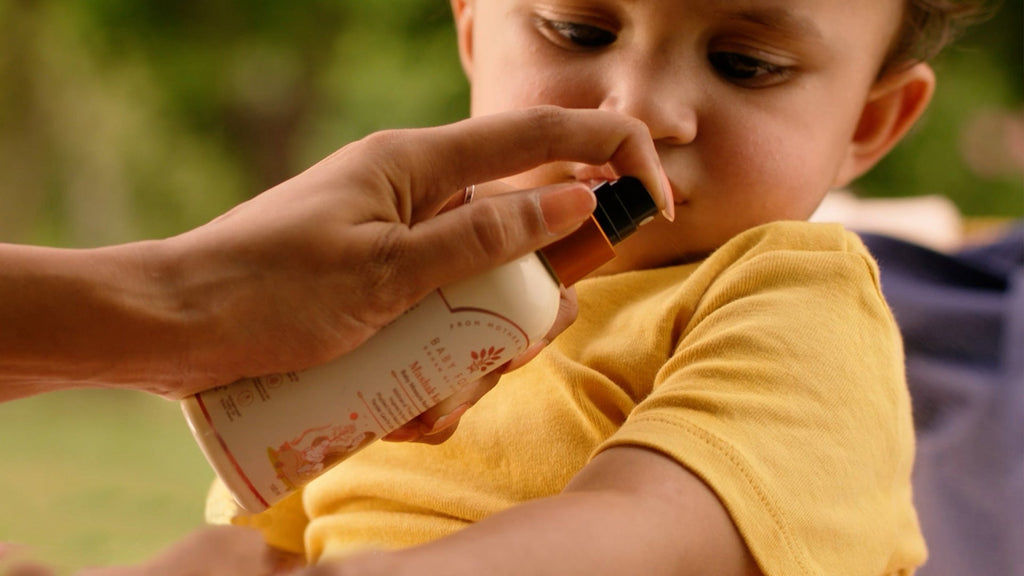
How to Protect Your Baby from Mosquito Bites
As a parent, your baby's safety and comfort are always top priorities. One of the biggest worries for moms, especially with newborns and young babies, is how to protect them from pesky mosquitoes and other insects. These tiny intruders don't just cause itchy bites; they can also pose health risks to your little one.
Unlike other challenges, like avoiding cold weather or harsh winds, mosquitoes seem to find their way everywhere-indoors and outdoors alike. It can feel overwhelming, but with the right strategies and tips, you can keep these pests away and give your baby a safe, cosy environment to thrive.
Why Mosquitoes Are a Bigger Problem for Babies
Mosquitoes are more than just a nuisance. They can carry diseases like dengue, malaria, and Zika virus. Babies are particularly vulnerable because their immune systems are still developing. Plus, their skin is more sensitive, making them prone to irritation and allergic reactions from bites.
Unlike adults, babies can't swat away mosquitoes or tell us when they're uncomfortable. That's why it's so important to be proactive in preventing mosquito bites for babies. Awareness is the first step to prevention.
Natural Mosquito Repellent Methods
If you're looking for organic and chemical-free ways to prevent mosquito bites for babies, nature has got you covered! Here are some tried-and-true methods:
- Essential Oils: Oils like citronella, eucalyptus, and lavender are excellent natural repellents. Mix a few drops with a carrier oil like coconut and apply to areas near your baby (not directly on their skin).
- Bhustarah (Lemongrass Oil): Known for its strong mosquito-repelling properties, lemongrass oil can be a great addition to your natural defence strategy.
- Cedarwood Oil: This oil is not only a mosquito repellent but also has a calming effect, making it ideal for babies.
- Lavender Oil: Besides repelling mosquitoes, lavender oil soothes and relaxes babies, ensuring a peaceful environment.
- Neem Leaves: Burning dried neem leaves can repel mosquitoes naturally. Ensure the smoke doesn't reach your baby directly.
- Garlic and Lemon Spray: A homemade mixture of garlic and lemon boiled in water can be sprayed around windows and doors. It's a safe and effective barrier.
- Herbal Mosquito Repellent Patches: Look for patches made from natural ingredients. These can be placed on clothes, strollers, or cribs.
Natural solutions are great because they're gentle and safe. This is why Mashak Kawach Baby Mosquito Repellant Spray is a natural and safe solution for babies. It contains ingredients like lemongrass, cedarwood, lavender, citronella, eucalyptus etc. known for their strong mosquito-repelling properties.
Physical Barriers for Extra Protection
Sometimes the simplest solutions are the best. Physical barriers are a foolproof way to protect newborns from mosquitoes without relying on sprays or lotions.
- Mosquito Nets: Use fine mesh mosquito nets over cribs, bassinets, and strollers. This is a classic method and highly effective.
- Clothing: Dress your baby in lightweight, long-sleeved tops and pants. Opt for breathable fabrics like cotton to keep them comfortable while covered.
- Window Screens: Ensure all windows in your home are fitted with tight screens to keep mosquitoes out.
These barriers work wonders in creating a physical shield between your little one and those pesky mosquitoes.
Home Environment Control
Your home is your sanctuary, and you can make it mosquito-free with a few smart adjustments:
- Eliminate Standing Water: Mosquitoes breed in stagnant water. Check flowerpots, drains, and even pet bowls regularly.
- Use Fans: Mosquitoes are weak fliers. Placing a fan near your baby's crib can keep them at bay.
- Plant Mosquito-Repelling Herbs: Basil, lemongrass, and marigolds are natural repellents that can be grown indoors or in your garden.
- Natural Candles and Incense: Citronella candles or sandalwood incense can add a calming vibe while keeping mosquitoes away. Ensure proper ventilation if used indoors.
A mosquito-free home is a safe home. Small steps can lead to big peace of mind.
Safe Use of Mosquito Repellents
When considering repellents, safety is paramount. Here's how to use them wisely to protect newborns from mosquitoes:
- Choose Baby-Safe Products: Look for repellents specifically designed for babies. These often have lower concentrations of active ingredients.
- Avoid Direct Application: Never apply repellents directly to a baby's skin. Instead, apply it to your hands and then to clothing or other surfaces.
- Follow the Label: Always read and follow instructions carefully. More is not better when it comes to repellents.
Using repellents the right way ensures they're effective without causing harm.
Tips for Outdoors
Heading outside? Here's how to keep mosquitoes away from a baby during outdoor adventures:
- Timing: Avoid going out during peak mosquito activity hours, usually at dawn and dusk.
- Portable Nets: Bring a portable mosquito net for strollers or baby carriers.
- Cover Exposed Skin: Use lightweight, full-coverage clothing to minimize exposed areas.
- Stay Away from Mosquito Hotspots: Avoid areas near stagnant water or dense foliage.
Taking these precautions ensures your outdoor time is fun and worry-free.
When to Seek Medical Attention
Despite your best efforts, mosquito bites might still happen. Watch out for these signs that may need a doctor's attention:
- Allergic Reactions: Swelling, redness, or itching that doesn't subside.
- Fever: A sudden fever post-bite could indicate an infection.
- Unusual Behavior: If your baby seems unusually fussy or lethargic, consult a paediatrician.
Prompt action can make all the difference if an issue arises.
Conclusion
Mosquitoes don't have to ruin your baby's comfort or your peace of mind. By using a combination of natural methods, physical barriers, and safe repellents, you can effectively prevent mosquito bites for babies. Whether you're indoors or outdoors, these strategies will help you stay one step ahead of those pesky bugs.
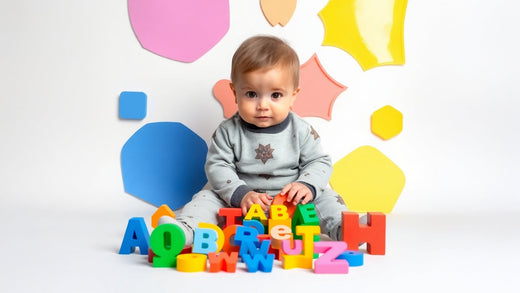
Top 5 Nursery Rhymes Every Parent Should Teach Their Kids
Parenting is a journey filled with magical moments, isn’t it? And one of the sweetest things you can share with your little ones is nursery rhymes. These timeless songs and verses aren’t just entertaining; they’re incredibly important for your child’s growth and development. Whether it’s the soothing melody of “Twinkle, Twinkle, Little Star” or the playful actions of “Itsy Bitsy Spider,” nursery rhymes are so much more than fun. They’re essential building blocks for your child’s learning and bonding.
Why Nursery Rhymes Are Essential for Kids
Nursery rhymes are so much more than just catchy tunes—they’re little powerhouses of learning! They play a big role in helping your child grow in so many ways. For starters, they’re amazing for language development.
The playful rhymes and rhythms make it easier for kids to pick up new words and practice pronunciation. Plus, repeating them helps sharpen memory and teaches kids to recognize patterns in language.
But it doesn’t stop there! Nursery rhymes sneak in basic math and problem-solving skills too. Think about counting sheep in Baa, Baa, Black Sheep or rowing in sync with Row, Row, Row Your Boat. These simple songs are like tiny lessons disguised as fun.
And the best part? They bring you closer to your little one. Singing nursery rhymes together creates special bonding moments that turn into cherished memories. It’s a beautiful way to nurture a loving connection.
Now that we’ve uncovered just how magical nursery rhymes are, let’s get into the top 5 every parent should teach their kids—and why they matter!
The Top 5 Nursery Rhymes and Why They Matter
-
Twinkle, Twinkle, Little Star
This classic nursery rhyme has enchanted children for generations. It’s simple melody and soothing rhythm make it perfect for bedtime.
The lyrics inspire children to wonder about the stars and the night sky, sparking their imagination. Words like ‘diamond’ and ‘sparkle’ introduce new concepts in an engaging way.
Why not use Twinkle, Twinkle, Little Star to kick off a conversation about the universe? You could even make it extra special by heading outside for some stargazing on a clear night—it’s a magical way to bring the song to life!
-
Itsy Bitsy Spider
The little spider’s adventures climbing up the spout are not only fun but also packed with life lessons. When the spider gets washed away and climbs back up, it’s a perfect way to teach kids about persistence and never giving up. Plus, the hand motions that go along with the song are a great way for kids to work on coordination and fine motor skills.
You can make it even more fun by acting out the spider’s journey together. It’s a great way to bring the song to life and make learning super hands-on!
-
Row, Row, Row Your Boat
This cheerful tune is ideal for encouraging teamwork and imagination. Singing it as a duet or in a group encourages cooperation. The gentle motion of ‘merrily rowing’ invites children to visualize a serene journey down a river.
Turn this into a playful activity by pretending to row a boat together. For added fun, you can even make a cardboard boat.
-
Baa, Baa, Black Sheep
This is a nursery rhyme that introduces counting and sharing in the simplest way. The story of dividing the wool teaches kids about giving and generosity. Kids learn counting in a practical and memorable context.
Reinforce the message of sharing by acting out the rhyme with stuffed animals or dolls.
-
Here We Go Round the Mulberry Bush
A lively tune perfect for teaching daily routines and having fun. The verses often describe daily activities like washing clothes or brushing teeth, helping kids understand the importance of a routine. It’s an active rhyme that gets kids moving, making it perfect for playtime.
Add your verses about your child’s daily routine. This personal touch makes it even more meaningful.
How to Make Nursery Rhymes a Learning Experience
The magic of nursery rhymes lies in their versatility. You can turn them into powerful learning tools with just a little creativity. Here are some tips:
-
Add Actions:
Pair rhymes with hand movements or dances to engage the mind and body. -
Ask Questions:
After singing, ask your child questions like, “Why do you think the spider kept climbing?” This sparks critical thinking. -
Incorporate Props:
Use toys, puppets, or drawings to bring the stories to life. -
Sing in Different Languages:
If you’re bilingual, teach the same rhyme in another language to expand your child’s linguistic skills. -
Story Extensions:
Create short stories based on rhymes. For instance, what happens after the spider climbs up again?
How Nursery Rhymes Build Lifelong Memories
As simple as they may seem, nursery rhymes have a way of sticking with us. Even as adults, we often find ourselves humming them. These rhymes are tied to some of our earliest and happiest memories. They remind us of bedtime cuddles, playful afternoons, and the warmth of being surrounded by love.
Singing nursery rhymes together can become a cherished tradition for your kids. It’s a way to celebrate milestones, calm their fears, or simply share a moment of joy. These songs may be short, but their impact lasts a lifetime.
Conclusion
Nursery rhymes are more than just melodies. They’re a gateway to learning, imagination, and bonding. By teaching your kids classics like ‘Twinkle, Twinkle, Little Star’ and ‘Itsy Bitsy Spider’, you’re giving them tools for growth and creating precious memories.
So, pick a rhyme, gather your little ones, and start singing. You’re not just teaching them words but about love, resilience, and the joy of togetherness. And isn’t that what parenting is all about?

What to Do When Your Baby's Tummy is Upset
The first experience of a baby's stomach problems makes new parents feel extremely stressed. The sensitive nature of a baby's stomach creates stress when they experience diarrhoea, which leads to a concerning situation for everyone involved. Parents remain uncertain about whether their child's symptoms represent typical development or require immediate medical assistance. The proper information, combined with gentle care will assist their baby to recover quickly because parents should feel reassured about the available help.
The article presents symptoms of baby diarrhoea together with its possible causes and treatment methods. The article contains essential information about preventing future stomach problems in addition to its primary content.
Recognising Diarrhea in Babies
The first thing you’ll want to do when your baby’s tummy is upset is figure out if it’s diarrhea. It’s normal for babies to have all sorts of different bowel movements, especially in those first few months. If your baby’s stool seems unusually watery, has a strong, unpleasant smell, or they’re going through several diaper changes in a short period, it’s probably Diarrhea. It’s important to keep track of these signs because, sometimes, Diarrhea can lead to dehydration or other health concerns. So, pay attention to how your baby’s feeling, and don’t hesitate to reach out if something feels off.
Common Causes of Diarrhea in Babies
Diarrhea in babies can happen for several reasons, and some causes are more common than others. Knowing what could be causing the issue helps you know how to respond and when to seek help. Here are some of the most common causes of Diarrhea in babies:

Viral Infections:
One of the most frequent causes of Diarrhea in babies is a viral infection, like rotavirus or norovirus. These infections often come with other symptoms, like a fever, vomiting, and general fussiness. It can be tough for your little one, but don’t worry – these infections usually clear up within a few days with lots of fluids and TLC.
Bacterial Infections:
Bacterial infections are a bit less common but can still happen. Things like contaminated food or water can cause bacterial gastroenteritis, which may lead to Diarrhea. Sometimes, this can be a bit more severe, so it’s always good to contact the doctor if you notice anything like this.
Teething:
Believe it or not, teething can sometimes lead to mild Diarrhea. Babies chewing on everything in sight produce more saliva, which can lead to looser stools. If your baby has no other symptoms and the Diarrhea is mild, it might be the teething work process.
Dietary Changes:
Introducing solid foods or switching formulas can sometimes upset your baby’s tummy, leading to Diarrhea. This is especially common when you’re adding new foods to your diet. To make things easier for their stomach, try introducing one food at a time and checking for any signs of tummy trouble.
Antibiotics:
If your baby has been prescribed antibiotics, Diarrhea could be a side effect. Antibiotics can mess with the balance of bacteria in your baby’s gut, leading to some digestive upset. If the Diarrhea is mild and your baby seems otherwise okay, it should pass once the course of antibiotics is finished.
Allergies or Intolerances:
Some babies may be sensitive or even allergic to certain foods, like dairy or gluten. If your baby gets Diarrhea after eating certain foods, it might be worth looking into potential food allergies or intolerances. If you suspect this could be the case, talk to your paediatrician to explore the possibility.
Understanding these causes can help you determine what might be happening and what steps to take to help your baby feel better!
What to Do When Your Baby Has Diarrhea?
Seeing your baby go through Diarrhea can be tough, but there are things you can do to help them feel better and get back on track. Here are a few simple steps to keep in mind:
Stay Hydrated:
The most important thing when your baby has Diarrhea is to ensure they stay hydrated. Diarrhea can cause dehydration pretty quickly, especially in babies. Keep offering small sips of water, breast milk, or formula throughout the day. If your baby is older, you can try oral rehydration solutions (ORS), which help replace the fluids and electrolytes your baby has lost.
Keep Baby Comfortable:
Diarrhea can make your baby’s bottom sore, so it’s essential to change their diaper often to prevent diaper rash. Be sure to use soft, gentle wipes (organic is always a good option), and don’t forget to apply a barrier cream to protect your delicate skin. Let your baby’s bottom air out as much as possible—this can help!
Stick to Simple Foods:
If your baby is eating solids, keep things simple and easy on their tummy. Think applesauce, bananas, rice, and toast—these bland foods are gentle on the stomach. Avoid fatty, spicy, or sugary foods, as they can worsen Diarrhea.
Offer Smaller, More Frequent Feedings:
If you’re breastfeeding, continue offering breast milk regularly. Smaller, more frequent feedings are fine and may help settle your baby’s tummy. If you’re formula-feeding, consider giving smaller bottles more often to avoid overloading your baby’s stomach at once.
Keep Baby Calm and Rested:
Diarrhea can make babies cranky and uncomfortable, so it’s important to give them plenty of opportunities to rest. Comfort your baby with soothing words, cuddles, and calm moments. Sometimes, a little extra love and relaxation is all they need to feel better.
With these simple steps, you can help your little one feel more comfortable while their tummy returns to normal!
When to Call the Doctor?
Most cases of baby diarrhoea will heal independently within a few days. Parents need to contact their paediatrician for assessment when their infant shows specific warning signs which might indicate a severe condition.
Parents should contact their paediatrician in these particular circumstances:
-
The baby has reached six months of age but still experiences diarrhoea.
-
The baby displays symptoms of dehydration.
-
The baby develops a fever exceeding 100.4°F (38°C) while experiencing diarrhoea.
-
The diarrhoea persists for longer than 2-3 days.
-
The baby displays excessive fussiness, lethargy, and repeated vomiting episodes.
A paediatrician will diagnose the cause of the condition and offer appropriate treatment plans to help the child recover from their illness. It is always best to consult with a professional when you have any doubts about your child's health.
Preventing Future Episodes
While you can’t always prevent Diarrhea in babies, there are a few steps you can take to help reduce the risk. Here’s how:
Handwashing:
One of the simplest ways to keep your baby safe from infections is by keeping their hands clean. Make sure to wash your baby’s hands before meals, and don’t forget to wash your hands after changing diapers or handling food. This helps cut down on germs and reduces the risk of stomach bugs.
Introduce Foods Gradually:
When it’s time to introduce solids, take it slow. Try adding one new food at a time and wait a few days to see how your baby reacts. This makes spotting any food allergies or sensitivities that could upset their tummy easier.
Breastfeeding:
If you’re able to, keep breastfeeding as long as you can. Breast milk is packed with nutrients and antibodies that support your baby’s immune system and help digestion. It’s one of the best ways to protect your little one from tummy troubles.
Use Organic Baby Products:
Parents should select organic baby products, which include organic baby wet wipes, baby body wash, diaper rash cream and organic baby food for their infants. The absence of toxic substances in these products protects both the baby's sensitive digestive system and their delicate skin. Organic products serve as an excellent solution to create happiness for both the baby's digestive system and their skin.
Conclusion
The care of a baby with an upset stomach requires proper knowledge and attention from parents to achieve relief and prevent future occurrences. Parents who understand baby diarrhoea symptoms and their causes and know when to seek medical help will feel more capable of managing these situations.
The baby needs hydration, comfort and rest, while parents should contact their doctor whenever they notice any unusual symptoms. You will discover a suitable routine that benefits both you and your child over time. New parents discover the difficulties of parenting before they truly understand what it means.

Home Remedies for Babies! As Grannies Knows the Best!
A home is where you always feel better, and home remedies always have our back when we need comfort, especially for our little ones. Passed down from our grannies, wrapped with the goodness of Ayurveda, home remedies for babies provide instant relief on those sick or uneasy days. Sometimes, medicines aren't always within reach, and for babies, they can be hard to consume. So why not rely on Mother Nature's natural nourishment?
Whether it's for cold and cough, colic, or upset stomach, here are some trusted home remedies for infants that have been used for generations.
Massage Is a Magic Medicine
A gentle warm massage not only enhances the baby's blood circulation but also helps relax the baby, especially during cold weather. Warm-natured oils like mustard oil are perfect for relieving congestion and soothing the baby's discomfort. Mustard oil is also known for calming a baby with colic, one of the most common infant issues.
Another great pick is Baby Forest Badami Sneh Organic Cold Pressed Almond Oil, which provides warmth and nourishment. Almond oil helps strengthen the immune system and keeps the baby's skin soft and hydrated, making it an essential part of any baby care routine.
Burp Is Good to Go!
Have you noticed moms gently patting their baby's back after feeding? This simple act helps the baby burp and prevents discomfort. Waiting 10 to 15 minutes after feeding and encouraging your little one to burp ensures that they won't feel gassy or fussy. It also helps prevent milk from coming back up, making digestion smoother.
To make feeding even easier, try using the Baby Forest Laad Pyaar Baby Feeding Bottle, which is specially designed to reduce colic and fussiness in babies. This can be a lifesaver for moms dealing with colic and digestive issues!
Does Your Child Have a Fever? An Onion Is All That You Need!
Did you know that onions can help reduce fever naturally? It's not just a myth! Indian home remedies for colds in infants often include onions because they help remove toxins from the body. Simply place a chopped onion in a sock and put it on your baby's feet. The onion works to absorb bacteria and viruses, lowering the fever while purifying the blood.
Once the sock turns brown, remove it. This home remedy for colds and coughs for babies is a natural way to soothe your baby and help them recover.
Curd, Buttermilk, and Banana Are Good for the Tummy!
If your baby is experiencing stomach issues, such as diarrhoea, the right probiotics can help. Curd, buttermilk, and bananas are great at introducing good bacteria to your baby's gut and helping with digestion. Bananas are especially effective in stopping loose motions quickly while also replenishing lost water and nutrients. These foods act as natural probiotics and are a trusted home remedy for babies with tummy troubles.
Haldi Milk Is the Marvel Milk!
Turmeric (haldi) has been a trusted remedy for infections for centuries. Its antibacterial properties make it an effective treatment for various illnesses. If your doctor says your baby has an infection, a small cup of turmeric milk (known as haldi milk) can help them recover quickly. It's also useful for healing minor cuts and scrapes, making it one of the best home remedies for infants to keep in your toolkit.
Carry A Lemon When You Travel with Your Baby
Travelling with a baby can sometimes lead to motion sickness, which causes nausea, sweating, or even vomiting. The fresh, soothing scent of lemon can help ease these symptoms. A few drops of lemon juice diluted with water or simply smelling a lemon can help your baby feel better during the drive. This old home remedy for colic in babies is simple, effective, and natural.
Additional Home Remedies for Babies
Apart from these traditional remedies, here are some more home remedies for colds and coughs for babies that you can easily try at home:
-
Ginger and Honey (for babies over 1 year old):
A small amount of ginger juice mixed with honey helps soothe a sore throat and relieve cough. Always consult your paediatrician before giving honey to babies.
-
Ajwain (Carom Seeds) Steam:
Ajwain steam can help clear nasal congestion and soothe respiratory issues in infants. Simply boil some ajwain seeds in water and allow the baby to inhale the steam from a safe distance. -
Basil (Tulsi) Water:
Boil a few basil leaves in water and let your baby sip it (if they are over 6 months old) to help with cold and cough symptoms.
These Indian home remedies for colds in infants are safe, natural, and often very effective in relieving symptoms.
Why Trust Home Remedies for Babies?
Home remedies are close to our hearts, especially when they are passed down through generations. They are not only effective but are also free from chemicals and side effects. This makes them perfect for the delicate bodies of babies. Relying on natural remedies brings a sense of security to parents, knowing they are providing gentle care straight from Mother Nature.
Conclusion
There's a reason home remedies for babies have been trusted for generations—they are gentle, effective, and close to nature. Whether you're treating cold and cough, colic, or digestion issues, these remedies offer relief without the worry of chemicals or side effects.
Always consult your paediatrician before trying any home remedy, especially if your baby is very young. But with the right care and natural remedies, you can keep your baby healthy, happy, and comfortable.

When Can You Feel Your Baby Kick? What to Expect During P...
One of the most special milestones during your pregnancy journey is feeling your baby's first kick. That tiny flutter is not just a sign of your baby growing; it's also a beautiful reminder of the life you're nurturing within you. But if you're pregnant for the first time, you might wonder when you'll feel it and what to expect. Let's get into the fascinating world of baby movements during pregnancy.
When Do You Start Feeling Baby Kicks?
For most women, the first baby movements, also called quickening, are felt between 16 and 25 weeks of pregnancy. However, this can vary depending on a few factors:
-
First-Time Moms:
If it's your first pregnancy, you're likely to feel movements closer to the 20-week mark as it takes time to identify those early flutters. -
Experienced Moms:
If you've been pregnant before, you might recognize those movements as early as 16 weeks. -
Placenta Position:
If you have an anterior placenta (the placenta is positioned at the front of your uterus), it might take longer to feel kicks since the placenta acts as a cushion. -
Baby's Activity Levels:
Every baby is different. Some are naturally more active and make their presence known earlier.
What Do Baby Kicks Feel Like?
In the beginning, baby kicks may feel like gentle flutters, bubbles, or tiny taps in your belly. It's easy to mistake these for gas or stomach rumblings. As your baby grows, these movements become stronger and more defined. By the third trimester, you'll likely feel more powerful kicks, rolls, and stretches.
It's important to note that baby movements vary throughout the day. Your baby might be more active when you're resting or after you've eaten something sweet. Over time, you'll start recognizing patterns in their activity.
Why Are Baby Kicks Important?
Feeling your baby move is more than just an emotional experience; it's a sign of their health and well-being. Here's why monitoring kicks is important:
-
Growth and Development:
Regular movements indicate that your baby is growing and developing as expected. -
Bonding:
Feeling your baby kick creates a unique connection between you and your little one. -
Early Warning Signs:
A sudden decrease in movement can signal a potential issue, so keeping track of kicks can help detect problems early.
How to Encourage Baby Movements
If you're eagerly waiting to feel those first movements or trying to encourage more kicks, here are a few tips:
-
Relax and Pay Attention
Sit or lie down in a quiet place and focus on your belly. It's easier to notice movements when you're relaxed and not distracted.
-
Eat a Snack
Babies often become more active after you eat something sweet or drink a cold beverage.
-
Play Music
Playing soft music near your belly or gently talking to your baby can sometimes prompt a response.
-
Try a Light Massage
Gently massaging your belly might encourage your baby to wiggle and move.
What If You Don't Feel Kicks Yet?
If you haven't felt your baby kick by the 25th week, don't panic. Several factors, like placenta position or your baby's sleeping patterns, can delay noticeable movements. However, it's always a good idea to check with your doctor for reassurance. They may perform an ultrasound to confirm your baby's activity and health.
Tracking Baby Movements
As your pregnancy progresses, your doctor might suggest tracking your baby's movements, especially during the third trimester. This is often done through a kick count. Here's how to do it:
- Choose a time when your baby is usually active, often after a meal.
- Lie down on your side or sit comfortably.
- Count how long it takes to feel 10 movements (kicks, rolls, or flutters). Ideally, you should feel 10 movements within 2 hours.
If you notice a significant decrease in your baby's movements, contact your healthcare provider.
When to Be Concerned About Baby Kicks
While it's normal for movement patterns to vary, there are times when you should seek medical advice:
- You haven't felt any movement for 25 weeks.
- There's a noticeable decrease in your baby's usual activity.
- Your baby hasn't moved for an extended period, even after trying methods to encourage movement.
Your doctor might perform an ultrasound or other tests to ensure everything is okay.
Using Pregnancy Tools to Monitor Progress
Tracking your baby's development doesn't have to be overwhelming. Tools like pregnancy apps or journals can help you log baby movements and stay organized. Some moms also find joy in using belly headphones to play soothing music, which might even get a response from your little one!
Conclusion
Feeling your baby kick for the first time is a moment of pure magic—a reminder of the incredible journey you're on. Those little movements are not just signs of your baby's growth but also opportunities to bond and prepare for the new life you're bringing into the world.
If you're ever unsure or concerned about your baby's movements, don't hesitate to reach out to your healthcare provider. This time in your life is as much about learning as it is about nurturing, and every experience adds to the beautiful story of motherhood.
So, take a moment to pause, rest your hands on your belly, and feel those tiny taps and kicks. They're your baby's first way of saying, “I'm here, and I can't wait to meet you!”
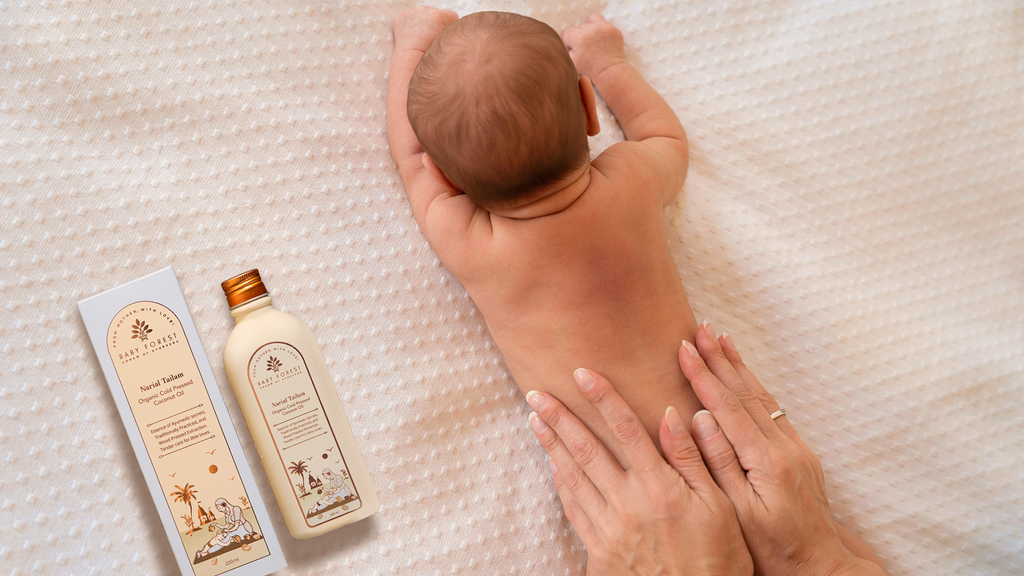
The Benefits of Coconut Oil for Nurturing Baby’s Delicate...
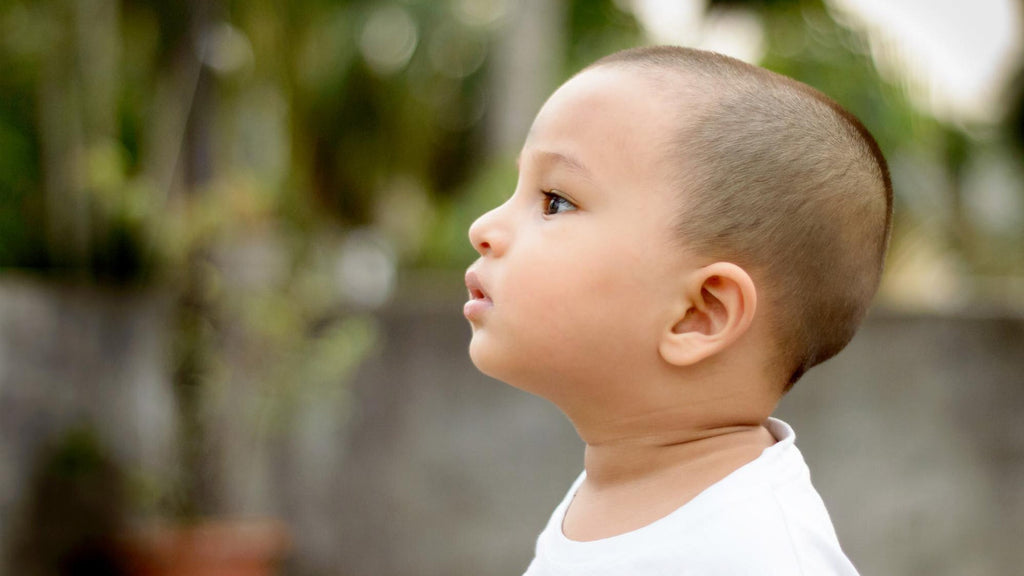
Why Is My Baby Losing Weight After Birth? When to Be Conc...
As a new parent, one of the first things you will notice during your baby’s initial check-ups is how closely their weight is monitored. So, it can be surprising or even worrying to hear that your baby has lost some weight after birth. Rest assured, this is a common occurrence and, in most cases, completely normal. But how much weight loss is normal? And when should you be concerned?
In this blog, we’ll explore why babies lose weight after birth when it becomes a reason to worry and what you can do to help your baby regain their birth weight and thrive.
Why Do Babies Lose Weight After Birth?
It’s natural for newborns to lose some weight in the first few days after birth. In fact, most babies lose about 5-10% of their birth weight within the first week. Here’s why:
-
Fluid Loss
Babies are born with extra fluid in their bodies, which they lose in the first few days. This is perfectly normal, and part of their body is adjusting to life outside the womb.
-
Limited Intake
In the first few days, babies consume small amounts of colostrum, the nutrient-rich milk produced by the mother. While it’s packed with essential nutrients, the volume is low, which might not meet their full caloric needs initially.
-
Adjustment to Feeding
Breastfeeding is a learning process for both mom and baby. Sometimes, it takes a few days for the baby to latch properly and for milk production to increase, which can contribute to temporary weight loss.
-
Meconium Passing
Babies pass their first stool, called meconium, shortly after birth. This also contributes to a small amount of weight loss.
How Much Weight Loss Is Normal?
A weight loss of 5-7% of birth weight in the first week is considered normal for most babies. Some may lose up to 10%, which is still within the acceptable range, provided they regain the weight soon after. Most babies return to their birth weight by 10-14 days of age.
When Should You Be Concerned?
While weight loss after birth is normal, there are instances where it might signal an underlying issue. Here’s when to consult your pediatrician:
-
Excessive Weight Loss
If your baby loses more than 10% of their birth weight, it’s important to monitor it closely and discuss it with your doctor.
-
Slow Weight Regain
If your baby hasn’t regained their birth weight by 2 weeks of age, it’s worth investigating the cause.
-
Signs of Dehydration
Symptoms like a dry mouth, fewer than six wet diapers a day, or sunken soft spots on the head (fontanelles) could indicate dehydration.
-
Difficulty Feeding
If your baby struggles to latch, falls asleep too quickly during feeds, or seems unsatisfied, it could impact their weight gain.
-
Unusual Symptoms
Persistent lethargy, irritability, or yellowing of the skin (jaundice) are signs that something might not be right.
What Can Cause Excessive Weight Loss?
Several factors can contribute to more significant weight loss in newborns, including:
-
Breastfeeding Challenges
Issues like a poor latch, tongue-tie, or insufficient milk supply can result in inadequate feeding.
-
Formula Feeding Issues
For formula-fed babies, improper mixing of formula or feeding schedules can sometimes lead to insufficient calorie intake.
-
Medical Conditions
Conditions like jaundice, infections, or metabolic disorders can affect a baby’s ability to feed and gain weight.
-
Preterm Birth
Premature babies often have more difficulty feeding and regulating their bodies, which can impact their weight.
How to Help Your Baby Regain Weight
If your baby’s weight loss is within the normal range, here are some tips to help them regain their birth weight:
-
Focus on Feeding
Feed your baby frequently, typically every 2-3 hours, or on demand. Breastfeeding mothers should aim for 8-12 feeds in 24 hours to ensure adequate milk intake.
-
Ensure a Proper Latch
A good latch is crucial for efficient feeding. If you’re unsure, seek help from a lactation consultant who can guide you through the process.
-
Track Feeding Cues
Look for signs that your baby is hungry, like rooting, sucking motions, or putting their hands to their mouth. Early feeding cues help ensure your baby gets enough nourishment.
-
Pump If Needed
If milk supply is a concern, consider using a breast pump to stimulate production and offer expressed milk to your baby.
-
Supplement If Advised
In cases where breastfeeding alone isn’t sufficient, your doctor may recommend supplementing with formula. Always follow your pediatrician’s guidance.
-
Monitor Diaper Output
Wet and dirty diapers are a good indicator of your baby’s intake. Aim for at least 6 wet diapers and 3-4 soiled diapers per day by the end of the first week.
-
Skin-to-Skin Contact
Holding your baby skin-to-skin encourages breastfeeding and helps regulate their body temperature and heart rate.
Conclusion
Weight loss after birth is a natural part of your baby’s adjustment to life outside the womb. With proper feeding and care, most babies regain their weight within the first couple of weeks.
Remember, every baby is different, and so is their growth pattern. Don’t hesitate to lean on your pediatrician, lactation consultant, or support network for guidance.

Why Is Breastfeeding Painful in the First Few Weeks? Caus...
Breastfeeding is a special journey for both mothers and babies. It's a time of bonding, nourishment, and closeness. However, for many mothers, the first few weeks of breastfeeding can come with unexpected challenges, especially pain. If you're experiencing discomfort, know that you're not alone. Breastfeeding pain is common initially, but it's usually temporary and can be managed with the right approach.
In this blog, we'll explore why breastfeeding can be painful in the early weeks, what causes it, and, most importantly, how you can ease the discomfort while continuing to nourish your baby.
Why Does Breastfeeding Hurt Initially?
Breastfeeding pain in the first few weeks is often due to your body adjusting to this new process. Here's why it happens:
-
Learning Curve for Both Mother and Baby
Breastfeeding doesn't always come naturally. Both you and your baby are learning how to latch and feed effectively. This process can sometimes cause pain until both of you get the hang of it.
-
Tender Nipples
Your nipples may feel tender or sore as they adjust to frequent feeding. This is especially common if your baby isn't latching correctly, leading to excessive friction.
-
Engorgement
When your milk comes in, your breasts might feel swollen, firm, and tender. This is called engorgement, and it can make breastfeeding uncomfortable.
-
Let-Down Reflex
The let-down reflex is the release of milk triggered by your baby's sucking. While it's essential for feeding, some mothers feel a tingling or sharp pain during let-downs, especially in the early weeks.
-
Blocked Ducts or Mastitis
If a milk duct becomes blocked or infected (mastitis), it can cause pain and inflammation. This is less common but can occur if milk isn't being emptied properly.
Common Causes of Breastfeeding Pain
Understanding the root cause of your pain is the first step in addressing it. Here are some common reasons why breastfeeding may hurt:
-
Poor Latch
If your baby doesn't latch deeply onto your breast, they may only suck on the nipple instead of the areola. This can lead to cracked, sore nipples.
-
Tongue-Tie or Lip-Tie
Some babies are born with tongue-tie or lip-tie, which can make it difficult for them to latch properly. This may cause pain for the mother and frustration for the baby.
-
Thrush
Thrush is a fungal infection that can develop in your baby's mouth or on your nipples, leading to pain during and after feeding. It's characterized by redness, itching, or white patches.
-
Oversupply of Milk
An oversupply can cause forceful let-downs, making feeding uncomfortable for your baby and resulting in painful latching for you.
-
Incorrect Breastfeeding Position
The way you hold your baby can impact their latch. An incorrect position might make feeding more difficult and painful.
Solutions to Ease Breastfeeding Pain

The good news is that breastfeeding pain in the early weeks is usually manageable with a few adjustments and tips. Here's how you can find relief:
-
Focus on a Proper Latch
A good latch is key to pain-free breastfeeding. Make sure your baby's mouth covers the nipple and most of the areola. If it hurts, gently break the suction and try again. Don't hesitate to seek help from a lactation consultant if you're struggling.
-
Try Different Positions
Experiment with breastfeeding positions to find one that works for you and your baby. Popular options include the cradle hold, football hold, and side-lying position. Each position offers a different angle for latching, which might help reduce pain.
-
Use Nipple Creams or Oils
Applying a lanolin-based cream or coconut oil after feeding can soothe sore nipples. These are safe for your baby and help promote healing.
-
Warm Compresses for Engorgement
If engorgement is causing discomfort, apply a warm compress or take a warm shower before feeding. This helps soften the breast tissue and encourages milk flow.
-
Cold Packs for Swelling
After feeding, use a cold pack to reduce swelling and relieve pain. A chilled cabbage leaf can also work wonders for engorged breasts.
-
Empty Your Breasts Fully
Ensure that your baby empties one breast before switching to the other. This prevents blocked ducts and reduces the risk of mastitis.
-
Address Tongue-Tie or Lip-Tie
If you suspect your baby has a tongue-tie or lip-tie, consult your paediatrician. A simple procedure can correct the issue and improve latching.
-
Use a Breast Pump If Needed
If feeding directly is too painful, consider using a breast pump temporarily to express milk. This allows your baby to continue receiving breast milk while giving your nipples time to heal.
How to Make Breastfeeding More Comfortable
Creating a comfortable environment can make a big difference. Find a quiet, cosy spot for feeding, use supportive pillows, and wear nursing bras for added comfort. Don't be afraid to ask for help from family or friends during this time—it's okay to need support.
Conclusion
Breastfeeding is as much a learning experience for you as it is for your baby. While the first few weeks might bring some discomfort, remember that it's temporary, and with patience and practice, it gets easier. Every feed strengthens your bond with your baby and provides them with the best nutrition possible. Take it one day at a time, and don't hesitate to seek help when needed.
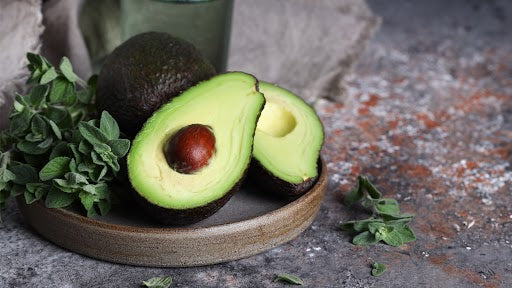
Avocado Oil For Babies: Gentle Benefits Of Nourishing Oil
Avocado oil has been a part of your kitchen for so long now it is becoming a part of your skincare routine. Known for its nourishing and hydrating properties, it is rich in vitamins, antioxidants, and healthy fats that works really well for your baby’s delicate skin.
When it comes to your baby, you naturally seek products that are as pure and gentle as possible. For centuries, the wisdom of Ayurveda has highlighted the importance of natural oils to promote a baby's wellness, believing that nature holds the key to soothing, protecting, and nourishing your baby's skin.
What is Avocado Oil?
Unlike many other essential oils, Avocado oil is not made from the seeds but extracted from the pulp of Avocado. It is enriched with antioxidants and moisturizing oil, known for its luxurious feel, and subtle scent. It is packed with nutrients that make it an ideal choice for your baby's delicate skin.
Avocado oil composition aligns beautifully with Ayurveda, which emphasizes natural ingredients that nourish and balance the body's doshas ( energy types). It has grounding and hydrating properties that make it suitable for your little one's skin, whose skin tends to be more vulnerable to dryness and irritation.
Nutrients in Avocado Oil
Vitamin E
Power pack of antioxidants that is essential for skin health. Vitamin E present in Avocado oil helps protect and soothe your baby's delicate skin against dryness and flakiness.
Essential fatty acids
Avocado oil is rich in healthy fatty acids, like oleic acids, which are known for their deep moisturizing properties. These fatty acids help strengthen the skin barrier by locking in moisture. For babies with naturally dry or sensitive skin, fatty acids offer gentle and lasting hydration.
Vitamin D and Beta carotene
These nutrients are also present in avocado oil in small amounts. While vitamin D is known for its properties like promoting skin health, beta carotene, is a precursor to vitamin A, offers skin-calming effects.
Benefits of Avocado oil for Babies

Here are some of the avocado oil benefits that make it an outstanding natural ingredient for supporting and protecting your baby’s delicate skin.
Hypoallergenic and Gentle
Avocado oil is known for its mildness, making it a good choice for the sensitive skin of your baby. Babies are prone to redness, and irritation due to their skin's delicacy. The gentle composition of avocado oil is less likely to cause discomfort to your baby.
Intensive Moisturizing Properties
Avocado oil for baby massage, It has the ability to deeply moisturize without feeling heavy or greasy. The fatty acids in the oil penetrate the skin easily, providing extra hydration.
Soothing Properties
Avocado oil's naturally soothing compounds, such as vitamin E and lecithin are perfect for calming skin discomforts like diaper rashes. Avocado oil for baby can help provide relief and restore skin texture.
How to use avocado oil safely for Babies
Avocado oil is incredibly versatile and can be used in several ways to care for a baby’s skin, from daily moisturizing routines to soothing specific problem areas.
Massage oil
Warm a small amount of avocado-infused baby body oil. Gentle massages are a great way to bond with your baby. You can give a body massage to your baby twice a day. Massaging before bedtime can help your baby relax and unwind.
Bath Additive
Just add a few drops of avocado oil in warm water for your baby’s bath. It will help in providing extra hydration to your baby’s delicate skin.
Diaper Rash Relief
Avocado oil has a cream texture that helps in nourishing your little one’s delicate skin. It also helps prevent diaper rashes and combat dryness.
Conclusion
You can incorporate Avocado oil into your baby's daily care routine. It will provide so many extra benefits like nourishment and hydration to your baby’s skin. This is a natural, safe, and effective ingredient to add to your baby’s daily care routine.


Why Is My Baby Sneezing So Much? Understanding Newborn Co...
If you’ve noticed your baby sneezing more than usual, it’s natural to feel a little worried. Is it a cold? Allergies? Or something else entirely? The good news is that sneezing in newborns is usually harmless and often a sign of their tiny bodies adjusting to the world around them. However, understanding why it happens and how to manage congestion can help you ensure your baby stays comfortable and healthy.
In this blog, we’ll explore the common reasons behind newborn sneezing and congestion, when to be concerned, and some simple ways to help your baby breathe easier.
Why Do Newborns Sneeze?
Newborn sneezing is a natural reflex that helps keep their nasal passages clear. Unlike adults, babies can’t blow their noses, so sneezing is their way of removing irritants like dust, milk, or mucus. Here are some common reasons your baby might be sneezing:
-
Adjusting to Air Quality
After spending nine months in the womb, your baby’s respiratory system is getting used to breathing air. Dust, pet dander, or even strong fragrances can cause sneezing as their tiny noses adapt to their new environment.
-
Clearing Mucus
Babies often have extra mucus in their nasal passages, especially in the first few weeks. Sneezing helps expel this mucus, keeping their airways clear.
-
Small Nasal Passages
A newborn’s nose is tiny, and even a little bit of congestion can make them sneeze more frequently.
-
Breast Milk or Formula Residue
Sometimes, milk can accidentally get into a baby’s nasal passages during feeding. Sneezing helps them clear it out.
-
Common Cold
If sneezing is accompanied by a runny nose, mild fever, or cough, your baby might have a common cold. Babies are more prone to colds since their immune systems are still developing.
What Causes Newborn Congestion?
Congestion in babies happens when their nasal passages are blocked or inflamed, making it harder for them to breathe. Here are some common causes:
-
Dry Air
During winter or in air-conditioned rooms, the air can become too dry, irritating your baby’s nasal passages.
-
Environmental Allergens
Dust, pollen, or smoke can irritate your baby’s sensitive nose and lead to congestion.
-
Teething
While teething, babies produce extra saliva, which can sometimes cause nasal congestion.
-
Infections
Viral infections like colds or mild respiratory illnesses can cause a stuffy or runny nose.
How to Identify If Your Baby Is Congested
Congestion in babies can make simple activities like feeding and sleeping a challenge. One of the common signs is snorting or noisy breathing, where you might notice a faint whistle or noise as your baby breathes. Congestion can also lead to difficulty in feeding, as a blocked nose makes it hard for your baby to nurse or drink from a bottle comfortably. Additionally, a congested baby may appear restless or fussy, especially during bedtime when lying flat can make congestion worse. You might also observe nasal discharge, either clear or thick mucus, which is another indication of nasal blockage. Recognizing these signs early can help you address your baby’s discomfort effectively.
Tips to Relieve Newborn Congestion
Congestion in newborns can often be managed with simple home remedies. Here are a few tips to help your baby breathe easier:
-
Use a Saline Nasal Spray
A saline spray is a safe and gentle way to loosen mucus in your baby’s nose. A couple of drops in each nostril can make a big difference.
-
Try a Bulb Syringe or Nasal Aspirator
These tools help remove mucus from your baby’s nose. Be gentle and only use them when necessary to avoid irritating their nasal passages.
-
Use a Humidifier
Adding moisture to the air with a humidifier can help relieve nasal dryness and congestion. Place it in your baby’s room, especially during winter months or if you use air conditioning.
-
Elevate Their Head Slightly
If your baby has trouble sleeping due to congestion, gently elevate the head of the crib mattress by placing a rolled towel underneath. Ensure it’s done safely to prevent any risk of rolling.
-
Use Baby Vapor Rub
For mild colds or stuffiness, a baby vapour rub like Baby Forest’s Komal Shwaas Vapor Rub can work wonders. This natural, gentle product contains soothing ingredients like eucalyptus oil, rosemary oil, and lavender oil. To use it, take a small amount on your fingers and gently rub it onto your baby’s chest, back, and the bottoms of their feet.This helps relieve congestion and makes breathing easier.

-
The Environment Clean
Reduce exposure to dust, smoke, and other allergens. Vacuum and clean regularly, and avoid using strong perfumes or sprays around your baby.
Conclusion
Sneezing and congestion can seem concerning, but they’re often just small bumps on the road of your baby’s growth. Understanding why your baby sneezes and how to handle congestion helps you care for them with confidence and ease.

What to Do About Flat Head Syndrome in Babies
As new parents, one of your top priorities is making sure of your baby’s health and well-being. So, it’s natural to feel concerned if you notice a flat spot forming on your baby’s head. Known as Flat Head Syndrome or Positional Plagiocephaly, this condition can make the back or side of a baby’s head appear flattened. The good news is that it’s common, and in most cases, it’s temporary and treatable with the right steps.
This blog will guide you through the causes, treatments, and prevention methods for Flat Head Syndrome, helping you ensure your baby’s head develops naturally and beautifully.
What Causes Flat Head Syndrome?
Babies are born with soft, flexible skulls, which allow their heads to pass through the birth canal and accommodate rapid brain growth in the first year of life. However, this also makes their skulls more susceptible to flattening.
The most common causes include:
-
Prolonged Pressure on One Spot:
Babies often lie in the same position for extended periods, especially during sleep. This can result in flattening on the back or side of the head. -
Torticollis:
A condition where neck muscles are tight, causing the baby to favour turning their head to one side. This can lead to uneven pressure on the skull. -
Premature Birth:
Premature babies have softer skulls and spend more time lying in one position in the NICU, increasing the risk of developing a flat head. -
Use of Baby Gear:
Spending too much time in car seats, swings, or bouncers can also contribute to flat spots by limiting a baby’s movement.
Signs to Look For-
Flat Head Syndrome can appear as early as 6 to 8 weeks of age. Here are the signs to watch out for:
-
Flat Spot:
A noticeable flat area on the back or side of your baby’s head.
-
Asymmetry:
The ears may seem uneven, or the face may appear slightly uneven.
-
Head Preference:
Your baby may always turn their head to one side when lying down.
If you notice these signs, it’s best to consult your paediatrician for advice and further evaluation.
How to Treat Flat Head Syndrome
In most cases, Flat Head Syndrome improves as your baby grows, becomes more mobile, and spends less time lying down. Here are some effective ways to address it:
-
Tummy Time
Tummy time is one of the best ways to prevent and treat Flat Head Syndrome. Placing your baby on their tummy while they’re awake helps strengthen their neck, shoulders, and back, encouraging them to lift and turn their head.
Start with short sessions, like 3-5 minutes, a few times a day, and gradually increase the duration as your baby gets used to it. Always supervise tummy time to ensure your baby’s safety. -
Repositioning
Repositioning your baby’s head during sleep and play can help distribute pressure evenly on their skull. Try these tips:
Alternate the direction your baby faces in the crib each night.
Encourage your baby to turn their head to the less preferred side by placing toys or sounds on that side.
Limit time spent in car seats, swings, and bouncers when not travelling. -
Using a Mustard Pillow
A mustard pillow, commonly used in Indian households, is an age-old remedy for preventing and treating Flat Head Syndrome. Filled with mustard seeds, these pillows are soft and moldable, helping to support the baby’s head evenly while preventing flat spots. Additionally, they provide gentle cushioning that allows the baby’s head to naturally shape over time.

-
Physical Therapy
If Flat Head Syndrome is caused by torticollis, your paediatrician may recommend physical therapy to stretch and strengthen your baby’s neck muscles. A therapist can also teach you simple exercises to do at home, making it easier to improve your baby’s head mobility. -
Helmet Therapy
In severe cases, your doctor might suggest helmet therapy. This involves wearing a custom-fitted helmet that gently reshapes the baby’s head over time. While this is usually reserved for extreme cases, it’s a safe and effective option when recommended by a specialist.
How to Prevent Flat Head Syndrome
Preventing Flat Head Syndrome is easier than treating it. Here are some tips to keep in mind from the start:
-
Encourage Movement:
Regularly change your baby’s position throughout the day, encouraging them to move and turn their head naturally. -
Limit Time in Baby Gear:
Avoid keeping your baby in car seats, swings, or bouncers for long periods. -
Promote Active Play:
Use tummy time and floor play to encourage movement and head control. -
Use Supportive Pillows:
A mustard pillow can help prevent flat spots while offering your baby the right kind of support. -
Monitor Sleeping Position:
While it’s important to put your baby to sleep on their back to reduce the risk of SIDS (Sudden Infant Death Syndrome), you can gently reposition their head to alternate sides.
When to Seek Professional Help
Most cases of Flat Head Syndrome improve with time and simple interventions, but there are instances where professional help may be needed. Consult your pediatrician if:
- The flat spot worsens despite your efforts.
- You notice severe asymmetry in your baby’s head or face.
- Your baby struggles to turn their head or seems to have a tight neck.
Early intervention can make a big difference, so don’t hesitate to reach out if you’re concerned.
Conclusion
Addressing Flat Head Syndrome isn’t just about fixing a flat spot—it’s about supporting your baby’s overall development. Remember, every baby develops at their own pace, and with your love and attention, they’ll thrive.
So, take it one step at a time, enjoy these precious moments with your baby, and know that you’re doing a fantastic job. After all, a happy and healthy baby starts with small, thoughtful choices that show just how much you care.

Exploring the Benefits of Lavender Oil for Babies
Lavender, known for its pale color and fragrance, is more than just a beautiful flower. Its oil is used in natural remedies and wellness products. But did you know it also can be used in baby care products? Lavender oil has antibacterial and therapeutic properties that can benefit your baby’s body and mind. Ayurvedic practitioners have been using lavender oil for quite a long time now.
Let's explore how lavender oil can support your baby’s well-being.
Origin of Lavender Oil
The Lavender plant is a member of the mint family. Originally harvested, lavender was later cultivated. It is used in herbal medicine. The name lavender derives from the Latin root “lavare,” which means “to wash.” Lavender oil is extracted from fresh flowers of the lavender plant through a process called distillation. In many regions, lavender flowers are believed to have the power to calm and purify the body and mind.
Benefits of lavender oil in Baby Care

Lavender oil, when used properly can benefit your baby in several ways:
Calming and Soothing Properties
As winters can be harsh on your baby, they might develop nasal congestion. Which can make them really uncomfortable and it is difficult to see them like this. Baby Vapour Rub containing lavender oil can be a gentle and effective way to help relieve this discomfort.
Provide Relief from Colic
Massage can be a great bonding time for you and your baby. Use lavender-infused body massage oil to give your baby a soft massage. This will help in releasing the trapped gas from your baby’s tummy and provide relief from problems like colic and more.
Natural Antibacterial Properties
Lavender oil has a calming fragrance that everyone likes. It also has antibacterial properties making it a natural ingredient in baby- safe floor cleaner, ensuring a clean and calming environment for your baby.
Acts as a Natural Barrier
Lavender oil for babies can help maintain the skin barrier by preventing moisture loss and supporting the natural defenses. Lavender oil-infused mosquito repellents can keep them at bay while being gentle on your baby's soft skin.
Mood-Boosting Properties
Lavender’s mood-boosting properties are largely due to its ability to reduce tension and anxiety. Babies can sometimes feel overstimulated or anxious due to new experiences, and lavender’s gentle aroma can soothe babies, helping them to feel more secure and reduce fussiness.
How to Use Lavender-Based Baby Products
Although Lavender has so many benefits, you must follow safe usage practices while incorporating lavender oil into your baby’s daily routine.
-
Choose Baby-Specific Products
Always select products that are formulated specifically for babies, as they are made with specific guidelines making them an ideal choice. -
Perform a Patch Test
It is recommended to do a patch test before applying any product to your baby's skin. A product with a higher concentration can cause redness, itching, or irritation. Perform a patch test on a small area of the baby's skin to check for any reaction. -
Follow Instructions
Read product labels carefully and use them as directed. Avoid applying the product near the baby’s eyes or mouth. -
Consult your pediatrician
Before using any new product for your baby always consult your pediatrician. As they can provide you with the best guidelines.

Conclusion
Lavender oil, when used thoughtfully, brings a natural and calming touch to your baby's daily care routine. By choosing the right products and following safe usage practices, you can help provide comfort, peace, and well-being for your little one.
Remember that simplicity, safety, and care will always lead to the most gentle and nurturing experiences for your baby.

Top 5 Christmas Gift Ideas for Your Little One
What’s more exciting than watching your little one’s face light up on Christmas morning? As parents, we want every gift under the tree to be meaningful, practical, and full of love. But with so many options available, choosing the perfect Christmas gift can feel overwhelming. Don’t worry—we’ve got you covered! Here’s a curated list of the top five thoughtful and practical Christmas gift ideas that will make your baby’s holiday magical while catering to their needs and well-being.
5 Christmas Gift Ideas for your Kid:
-
Laad Pyaar Baby Feeding Bottle & Nipple Combo
Feeding your baby is such a special part of parenting, and having the right tools can make it so much easier and better. That’s where the Laad Pyaar Baby Feeding Bottle & Nipple Combo comes in. This handy set includes two bottles—one 150ml with a slow-flow nipple and another 260ml with a medium-flow nipple—perfect for adapting to your baby’s growing needs. Plus, it comes with two replacement nipples, which is always a lifesaver!

These bottles are made from high-quality, FDA-approved food-grade materials and are designed to feel as natural as possible, mimicking breastfeeding for a smooth feeding experience. And here’s the best part: the nipples have dual anti-colic vents, which help reduce air intake. That means fewer tummy troubles and happier feeding times for your little one—and for you!
-
Soumya Sparsh Baby Well-Being Combo
Caring for your baby's delicate skin requires gentle and natural products. The Soumya Sparsh Baby Well-Being Combo offers a trio of essentials:
- Komal Shwaas Baby Vapor Rub: A 100% natural formulation containing eucalyptus, rosemary, lavender, and thyme oils. It aids in clearing airways, soothing sore throats, and promoting restful sleep, making it especially beneficial during colder months.
- Moh Malai Baby Body Lotion: This lightweight lotion is enriched with shea butter, mulethi, and rose petals. It nourishes and protects your baby's skin, keeping it soft and hydrated.
- Khilta Mukhra Baby Face Cream: A luxurious blend of shea butter, saffron, and almond oil that deeply moisturizes and nurtures your baby's facial skin, maintaining its natural glow.
This Ayurvedic-inspired collection is crafted with love, ensuring your little one's well-being with the goodness of nature.
-
Komal Sneh Baby Winter Combo
As temperatures drop, keeping your baby comfortable becomes a priority. The Komal Sneh Baby Winter Combo is a thoughtful collection of essentials to keep your little one cozy and cared for during the colder months. This combo includes:
- Komal Shwaas Baby Vapor Rub: Made with 100% natural ingredients like eucalyptus, rosemary, lavender, and thyme oils, this vapor rub helps clear airways, soothe sore throats, and promote restful sleep, making it a must-have during winter.
- Khilta Mukhra Baby Face Cream: Enriched with shea butter, saffron, and almond oil, this cream deeply moisturizes your baby’s delicate skin, keeping it soft, balanced, and healthy even in dry weather.
- Badami Sneh Organic Cold-Pressed Almond Oil: A gentle, organic oil that nourishes and soothes your baby’s skin from head to toe, perfect for massages or protecting against winter dryness.
-
Khilta Mukhra Baby Face Cream
Yes, there are thoughtful combos available for baby care, but sometimes you might prefer to pick a single product that caters specifically to your little one’s needs. The Khilta Mukhra Baby Face Cream is a great example of such a product. Choosing a single product like this can be especially helpful if your baby has specific needs, like extra hydration for their face during winter. It also allows you to build a personalized skincare routine by combining only the products you know work best for your child. With its gentle formula, this face cream stands out as a reliable choice for everyday use.

-
Sneh Uphar Baby Gift Basket
The Sneh Uphar Baby Gift Basket is a thoughtful option if you’re looking for a meaningful Christmas gift. What’s great about this collection is that it’s designed with different age groups in mind—whether you’re shopping for a newborn, a toddler, or a slightly older child.
Each basket comes filled with carefully chosen, Ayurveda-inspired products that are both practical and nurturing, making it a well-rounded gift for new parents. Whether it’s for a baby shower, a birthday, or just a way to show some love during the holiday season, these baskets offer a nice mix of essentials that parents will actually use. Plus, with options tailored for different stages, you can pick one that feels just right for the little one in your life.
Final Thoughts
Selecting the right Christmas gift for your little one involves considering their comfort, health, and happiness. The products mentioned above are designed with these factors in mind, offering natural, safe, and effective solutions for various aspects of baby care. By choosing any of these options, you're not only giving a gift but also ensuring your baby's well-being during this festive season.
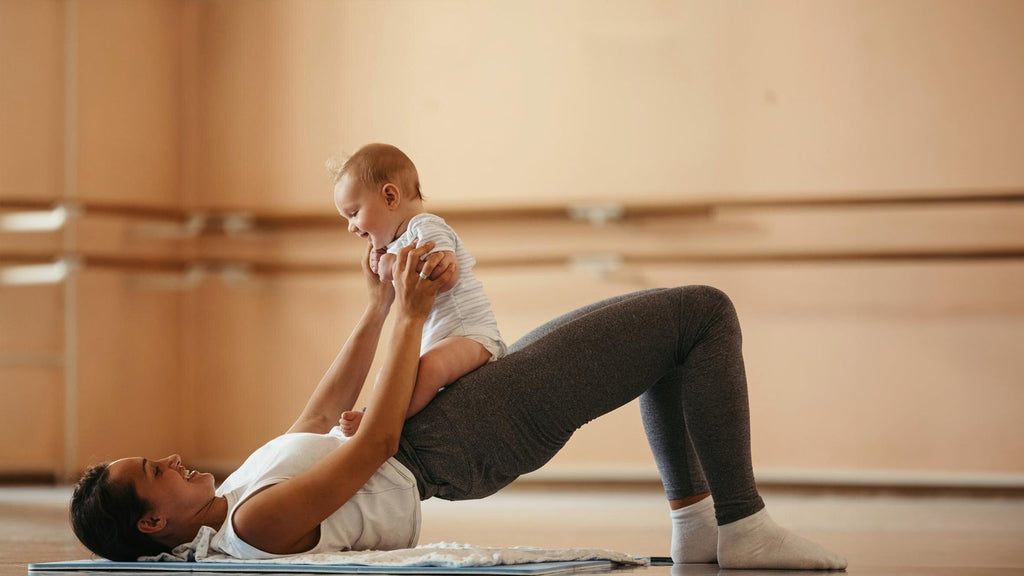
A Parent’s Guide to Dressing Your Baby for Cold Weather
Winter brings its own charm, with chilly breezes and cosy moments. But for parents, it also brings the challenge of keeping their little ones warm and comfortable. Babies, especially newborns, are more sensitive to cold weather because they can’t regulate their body temperature as well as adults. So, knowing how to dress your baby properly for the cold is essential to keep them snug, safe, and happy.
This guide will walk you through the essentials of dressing your baby for cold weather, ensuring they stay cosy without feeling overheated or uncomfortable.
When it comes to dressing your baby for winter, keeping them warm and cozy doesn’t have to mean piling on too many layers. The key is to choose clothing that provides full coverage and warmth without needing excessive layering.
Start with a single warm outfit, like a Full Sleeves Baby Bodysuit, a Hoodie Romper Set, or a Baby Overall Romper Set. These options are designed to cover your baby’s arms, legs, and feet, often including attached socks and mittens, so they’re well-protected from the cold.
If it’s particularly chilly or you’re stepping outside, add an extra layer like a Kashmiri Pashmina Baby Blanket to wrap them snugly. This provides an additional shield against the cold without making your baby feel restricted or overheated. Remember, it’s all about keeping them comfortable while ensuring they’re safe from the winter chill.

-
Choose the Right Materials
The type of fabric you choose for your baby’s winter wardrobe can make a big difference in keeping them comfortable. Here are some fabrics to prioritize:Cotton:
Perfect for base layers like bodysuits, as it’s soft, breathable, and gentle on sensitive skin.Wool or Fleece:
Ideal for outer layers, these materials provide excellent insulation. Look for fleece-lined rompers like the Hoodie Romper Set for extra warmth.Pashmina:
A premium choice for blankets, offering warmth without bulk.Knitted Wool:
Great for hats and mittens, as it’s warm yet breathable.
Avoid synthetic materials that can irritate your baby’s skin or cause overheating. -
Dressing for Sleep
Nighttime can be tricky when it comes to keeping your baby warm. You want to ensure they’re snug but not too hot. Start with a Full Sleeves Baby Bodysuit as the base layer, followed by a lightweight sleep sack or swaddle.

Always check the temperature of the room and avoid heavy bedding like quilts, which can pose a suffocation risk. A safe sleep environment is just as important as keeping your baby warm. -
Keep an Eye on Overheating
While it’s crucial to keep your baby warm, it’s equally important to avoid overheating. Overdressing can make your baby uncomfortable and increase the risk of heat rashes or even more serious issues. Signs of overheating include sweating, flushed cheeks, or a damp neck.
A simple rule to follow is the one-layer rule: dress your baby in one more layer than what you’re wearing to stay comfortable in the same temperature. -
Protect Their Head and Ears
Babies lose a lot of heat through their heads, so don’t forget a soft, snug-fitting hat. If you’re heading outdoors, ensure their ears are covered to prevent them from getting too cold. Many rompers, like the Hoodie Romper Set, come with attached hoods that can be used for added warmth. -
Check Comfort Regularly
Even when your baby looks cosy, it’s essential to check how they’re feeling. Feel their chest or back (not hands or feet, as they can naturally feel cooler) to ensure they’re warm but not sweaty. Adjust their clothing or layers accordingly.
Final Thoughts
Dressing your baby for winter isn’t just about keeping them warm; it’s about making sure they feel cozy, comfortable, and cared for. Don’t worry if you’re still figuring it out—dressing your baby is something you’ll get better at with time. Enjoy the snuggles, the giggles, and those quiet moments as you wrap them up against the cold.
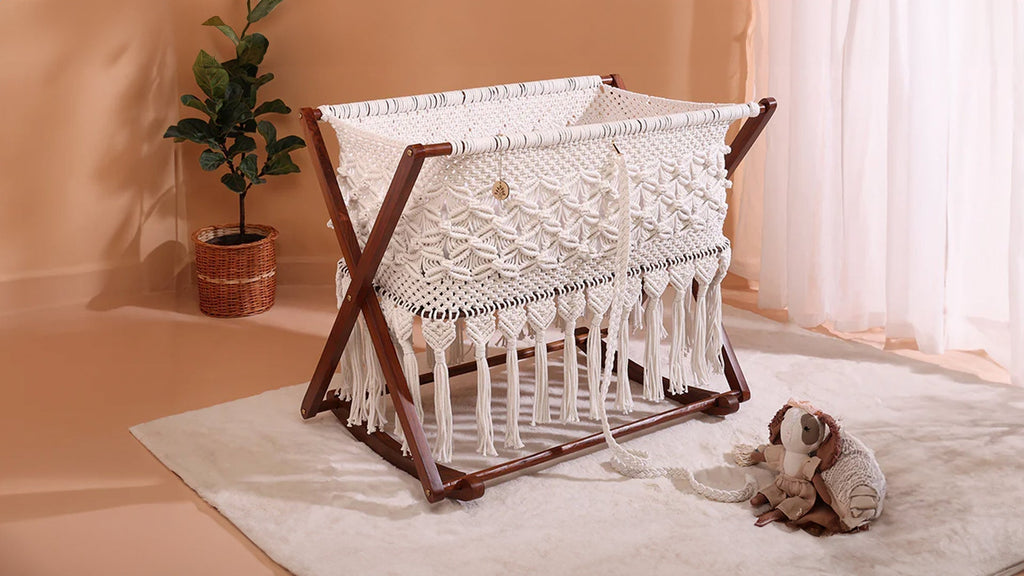
Top Tips for Choosing the Safest and Most Comfortable Bab...
A baby cot is more than just a piece of furniture—it's a haven where your baby will spend a significant amount of time sleeping, resting, and growing. Choosing the right cot can feel overwhelming with so many options available, but focusing on safety and comfort will help you make the best decision.
Here are some practical tips to guide you in selecting the safest and most comfortable baby cot for your precious one.
-
Prioritize Safety Standards
When it comes to baby furniture, safety is non-negotiable. So firstly, we see to it that the baby cot meets established safety standards.Sturdy Frame:
The cot should feel stable and not wobble when gently pushed. A durable frame minimizes the risk of accidents.Safe Gaps Between Slats:
Ensure the gaps between the slats are less than 6 cm to prevent the baby’s arms, legs, or head from getting stuck.Rounded Edges:
The cot should have smooth, rounded edges to avoid injuries. No sharp corners or exposed nails!
-
Choose Leak-Proof and Easy-to-Clean Materials
Babies are messy; it's just part of their charm! A leak-proof cot mattress and easy-to-clean materials can save you a lot of hassle.
Look for cots with water-resistant mattresses or covers that can be wiped clean easily. These are great for unexpected spills, diaper leaks, or baby drool.
Avoid materials that stain easily or require complicated cleaning procedures. Remember, convenience is key when dealing with babies. -
Go for Adjustable Height Features
An adjustable height cot is a lifesaver for parents. It grows with your baby and ensures that the cot remains practical as your little one transitions from newborn to toddler.Newborn Stage:
A higher mattress setting allows you to place your baby in the cot without bending too much, saving your back.Toddler Stage:
As your baby becomes more active, a lower mattress setting ensures they can’t climb out and risk falling.
This flexibility makes adjustable cots a great long-term investment. -
Opt for Natural and Non-Toxic Materials
Babies are sensitive, and their skin can react to harsh chemicals. Choosing a cot made from natural and non-toxic materials is essential for their safety and comfort.Natural Wood:
Look for cots made from solid wood like teak, pine, or rubberwood. They’re not only durable but also free from harmful chemicals.Non-Toxic Paints and Finishes:
Ensure the paint and finishes used on the cot are lead-free and safe for babies, as they might chew on the cot rails when teething.Eco-Friendly Options:
If sustainability is important to you, explore eco-friendly baby cots made from renewable materials. -
Check for Durability and Longevity
A good baby cot should last for years, possibly even for multiple children. Investing in a durable cot makes sure you don’t have to replace it too soon.
Choose cots with a solid construction that can handle the wear and tear of daily use. Avoid lightweight, flimsy materials. -
Pay Attention to Comfort
Your baby’s comfort is just as important as their safety. A comfortable cot encourages better sleep, which is crucial for their development.Firm Mattress:
Opt for a firm and supportive mattress that fits snugly into the cot without any gaps. A well-fitting mattress prevents the baby from slipping into gaps, reducing the risk of injury.Breathable Bedding:
Use lightweight, breathable bedding like cotton sheets to keep your baby comfortable without overheating.Soft Edging:
While the mattress should be firm, soft edges around the cot can enhance comfort and prevent bumps. -
Cot Size
Consider the size of the cot and how it fits into your living space.Standard vs. Compact Size:
A standard-size cot offers more room for the baby to grow, while a compact cot is ideal for smaller spaces or for travel. -
Style and Design
While safety and comfort are priorities, there’s no harm in choosing a cot that complements your home’s décor. Baby cots come in various styles, from classic wooden designs to modern minimalistic ones. Opt for timeless colours like white, beige, or natural wood tones. They blend well with most interiors and never go out of style.
Final Thoughts
Choosing the right baby cot is a big step. Think of it as creating your baby’s first little world—a cozy, safe space where they can sleep, dream, and grow. Take your time while shopping. Read reviews, ask questions, and don’t rush into a decision. The good news is, you don’t have to sacrifice style for practicality—there are plenty of beautiful cots that meet all your needs.
The Baby Forest Kilkari Wooden Baby Cot is a wonderful example of blending safety, comfort, and style. Made from high-quality HDMR wood and natural cane, this cot is thoughtfully designed with eco-friendly materials to ensure a safe, non-toxic space for your little one. The chemical-free, natural paint not only looks beautiful but also prioritizes your baby’s health and well-being. Plus, it comes with a comfortable mattress that features a leak-proof cover—perfect for keeping things clean and cozy.
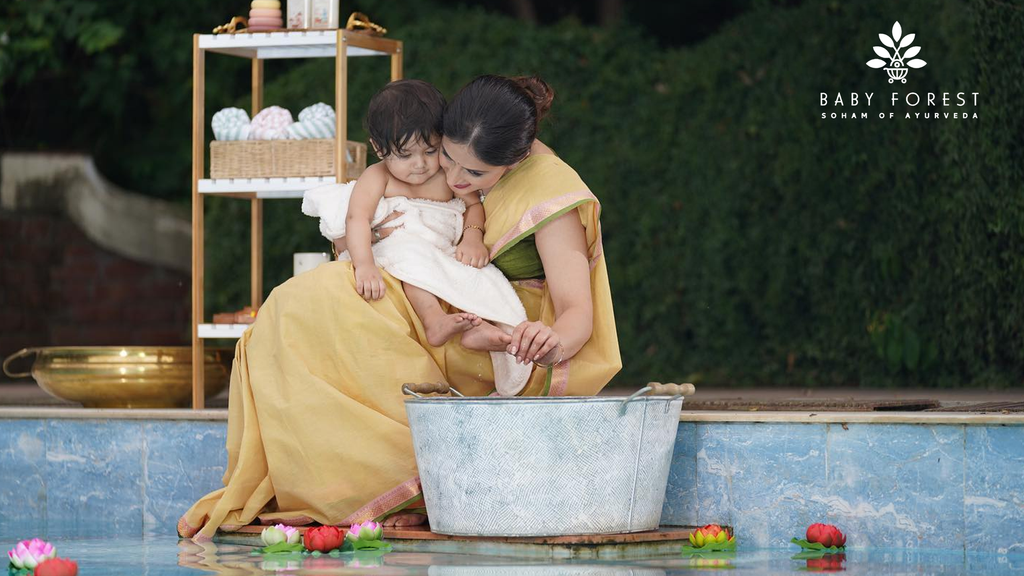
Celebrate Motherhood with Baby Forest: The Best Baby Prod...
Mother's Day is a time to celebrate and appreciate the incredible women who have shaped our lives with their love and care. For new moms, nothing is more special than providing the best care for their newborns. One way to make this journey easier is by offering high-quality baby care products that ensure the best for their little ones. Baby Forest understands this and offers a range of natural baby care products inspired by the ancient principles of Ayurveda, ensuring both mother and baby receive the gentle, nurturing care they deserve.
If you're looking for the best baby care products for newborns, here are six essential items from Baby Forest's range that every new mom should have for their little ones.
Must Have Baby Care Products
-
Baby Shampoo
Babies have delicate scalps and sensitive skin, so it's crucial to choose the right baby skin care products. A sulfate-free and paraben-free shampoo is ideal for gently cleaning and nourishing your baby's scalp. Harsh chemicals can cause irritation, so opting for a natural baby shampoo that hydrates and strengthens hair is important.
We recommend Baby Forest's Nikhrae Kesh Baby Shampoo, which is rich in Brahmi and Hibiscus leaf extracts, known for strengthening hair roots and promoting scalp hydration. This is a perfect addition to your newborn baby care products list, ensuring your baby's hair stays soft and healthy.
-
Body Massage Oil
An essential part of baby skincare is daily massages, and nothing beats the benefits of a good baby massage oil. Massaging your baby not only promotes relaxation but also aids in muscle development and improves circulation. Ayurvedic oils are particularly effective due to their natural healing properties.
For this, try Baby Forest's Maasoom Maalish Baby Body Massage Oil, which contains Sesame Oil and Rosemary to support bone and muscle development. This oil is a key item in any baby care product kit, offering therapeutic benefits that nourish and soothe your baby's skin.
-
Diaper Rash Cream
With the warmer months approaching, babies are more prone to diaper rashes due to sweating. Diaper rash creams are vital in keeping your baby's skin rash-free and comfortable. Look for creams made from natural ingredients that are gentle on sensitive skin.
We suggest Baby Forest's Komal Kawach Diaper Rash Cream, enriched with Aloe Vera and Harachampaka Madanah, which not only soothes irritated skin but also provides a natural barrier against future rashes. It's a must-have on your newborn baby care products list to ensure your baby's comfort all summer long.
-
Baby Body Wash
During hot summer months, it's essential to use a natural baby wash that cleanses without stripping the skin of its natural oils. A gentle, sulphate-free body wash will keep your baby's skin hydrated and free from irritation.
Baby Forest's Sampoorna Snan Baby Body Wash is a perfect choice, formulated with Jojoba Oil, Castor Oil, and Rosehip Oil to maintain your baby's soft, supple skin. Adding this soap to your baby care products list ensures your little one's skin remains cool and nourished, even during the heat.
-
Feeding Bottle
A baby feeding bottle is a thoughtful and practical essential for every new mom. It allows babies to feed comfortably, whether they are breastfed or formula-fed. When choosing a feeding bottle, prioritize safety, ease of cleaning, and baby-friendly designs.
Check out Baby Forest's BPA-Free Laad Pyaar Feeding Bottle, which is made from high-quality, non-toxic materials. It's the perfect feeding solution for your baby and a must-have item in any baby care products kit.
-
Baby Toys
Toys aren't just for fun—they play a vital role in a baby's cognitive and motor development. Whether it's interactive baby toys or simple stacking blocks, providing your baby with safe, educational toys helps stimulate their senses and encourages exploration.
At Baby Forest, you'll find a wonderful collection of toys for 1-year-olds that are designed to boost cognitive development and motor skills. From beach buckets to stacking toys, there's something for every curious little mind.
This Mother's Day, show your love and appreciation by choosing Baby Forest's baby care products, ensuring that both moms and their little ones receive the very best.



